Set pieces are becoming increasingly important, attracting the attention of coaches, analysts, and even fans worldwide.
Now, fans are familiar with the names and faces of set-piece coaches, as they frequently direct players during set pieces on the line.
Coaches have also become more confident in acknowledging the role of set-piece coaches and praising them in press conferences after matches.
This has led to the widespread adoption of various tactics and concepts related to set pieces in the entire sports community, with one of the most important concepts being the “block”.
The general block involves an attacking player sacrificing himself by positioning himself in front of a defender to prevent him from reaching a specific area, the targeted area, or from chasing a particular player, the targeted player.
This has led to the emergence of several concepts related to blocking or hindering the opponent, including the “block” and the “screen.”
Here, we define each term to facilitate understanding of the upcoming details:
- The block involves an attacking player positioning himself to block a defender, such as a zonal defender, to prevent him from getting out to reach the ball in the targeted area; it can also involve blocking the goalkeeper to stop him from claiming the ball before it reaches the target area or to delay his reaction.
- The screen involves an attacking player going to obstruct the man marker assigned to the targeted player, similar to what occurs in basketball.
This article will discuss the block in both forms: the zonal defender and the goalkeeper.
In next month’s article, we will explore the screen.
As a coach or analyst, you may have asked one of your players to perform a block, but he failed, allowing the defender to escape.
Alternatively, the block might have been too obvious, resulting in it being called a foul, especially since referees have started to show greater strictness regarding this issue.
Rumours have also circulated about new rules in some leagues that classify certain blocks as fouls, particularly against the goalkeeper.
In any case, referees have become more sensitive to this matter.
In this tactical analysis, we will discuss the various techniques and strategies for executing the block effectively while simultaneously avoiding mistakes.
Blocking A Zonal Defender
The Far Post
We will discuss the various techniques and strategies, starting with blocking zonal defenders, depending on whether the targeted area is on the far or near post.
We will begin with the far post and then discuss the near post.
Before getting into many details and variables, we would like to clarify the idea of the block first.
As in the photo below, the blocker ensures that he is fixed and balanced by bending his knee and lowering his hips, making his centre of gravity nearer to the ground.
He also puts his hands to his back to increase stability and keep in touch with the zonal defender at his back, preventing him from moving to the targeted area.
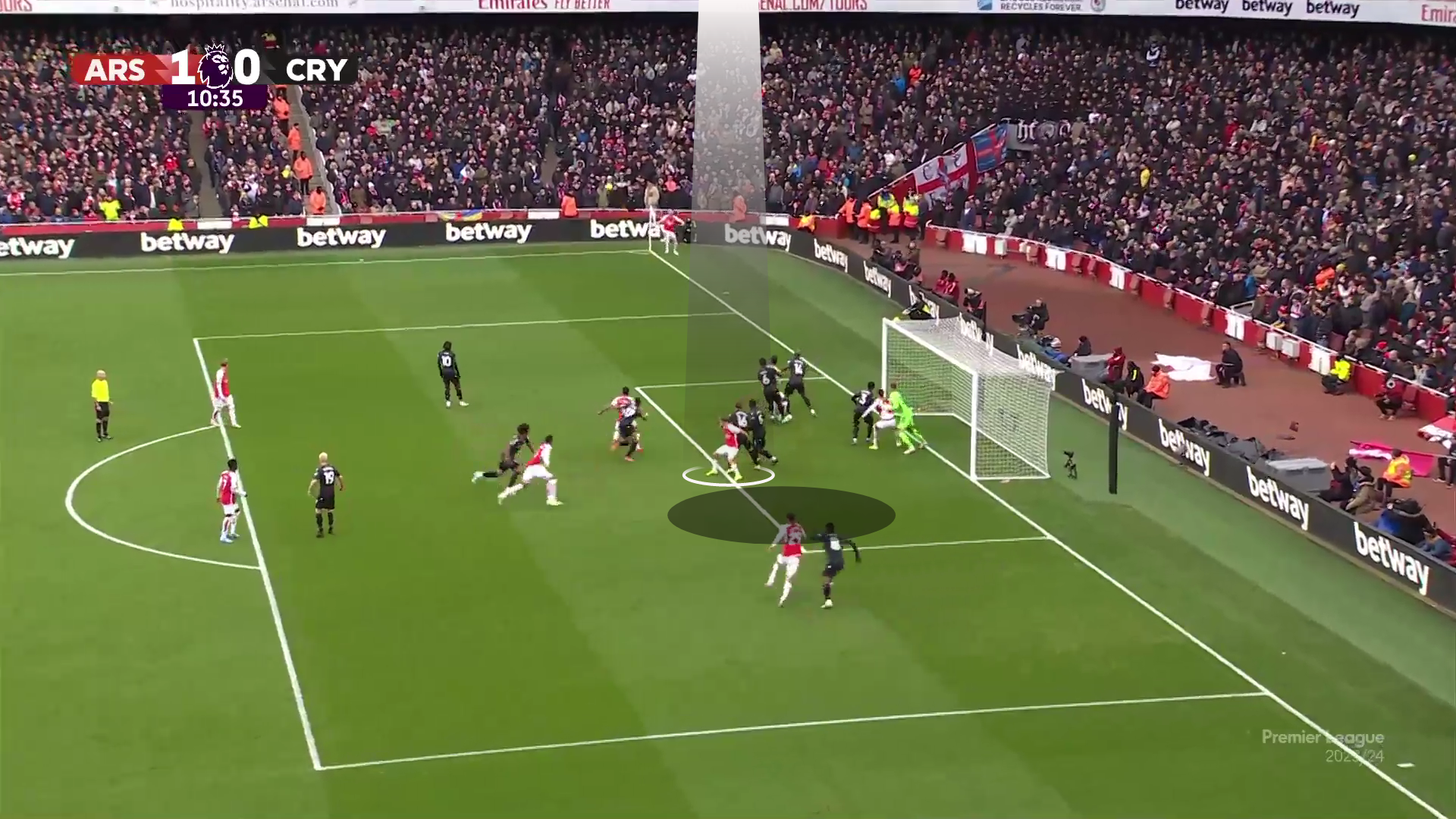
After that, we will discuss various tricks that help the blocker to be effective with less power needed and without committing fouls.
As in the case below, the starting position helps the blockers, so you can find Arsenal’s pack in the area beyond the far post on the blind side of zonal defenders who keep tracking the ball in the air and surprisedly were shocked by the blockers at their backs.
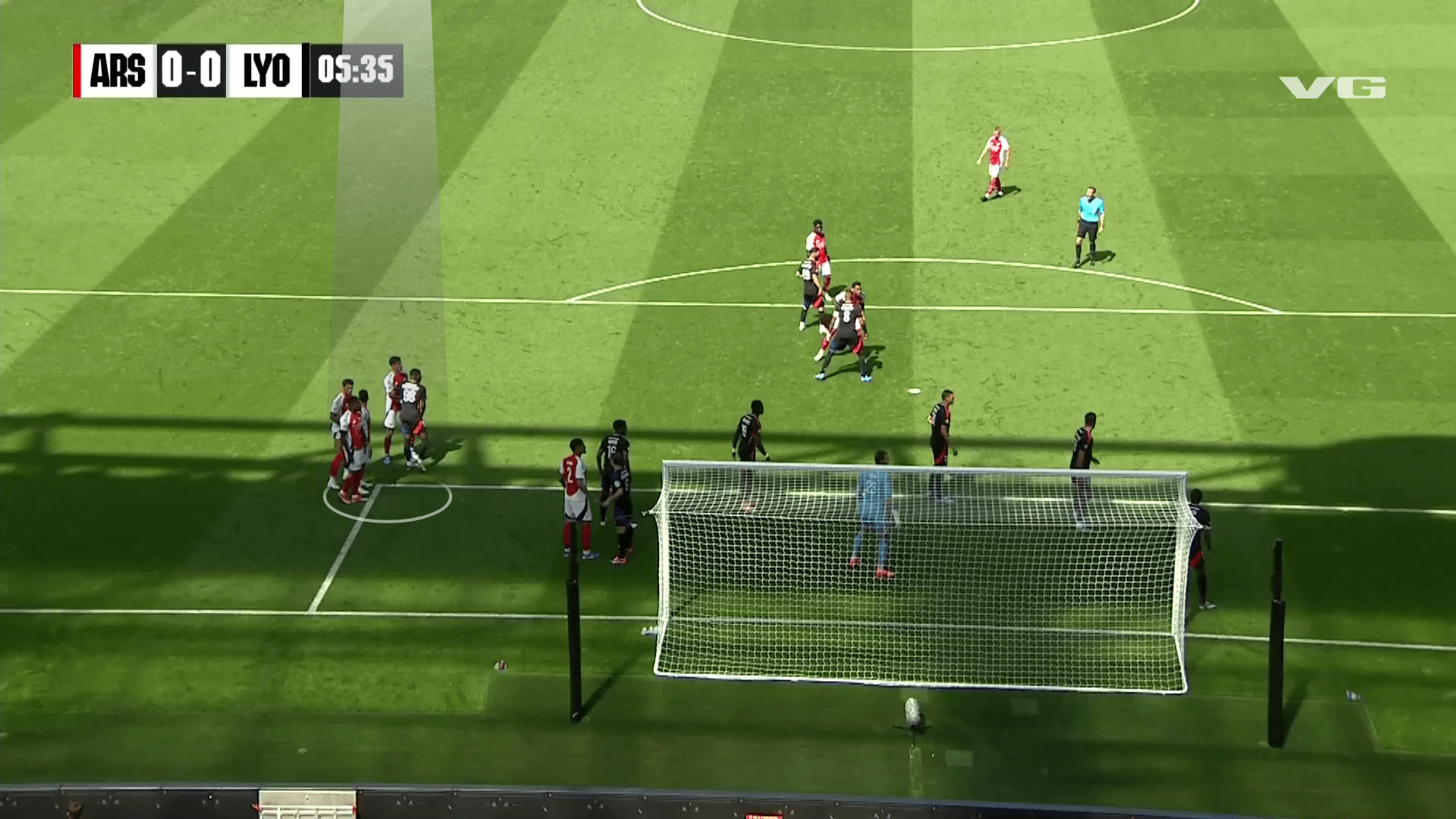
After that, In the photo below, two blockers start to move as the taker gives the sign, raising his hand, on the two zonal defenders’ blind side.
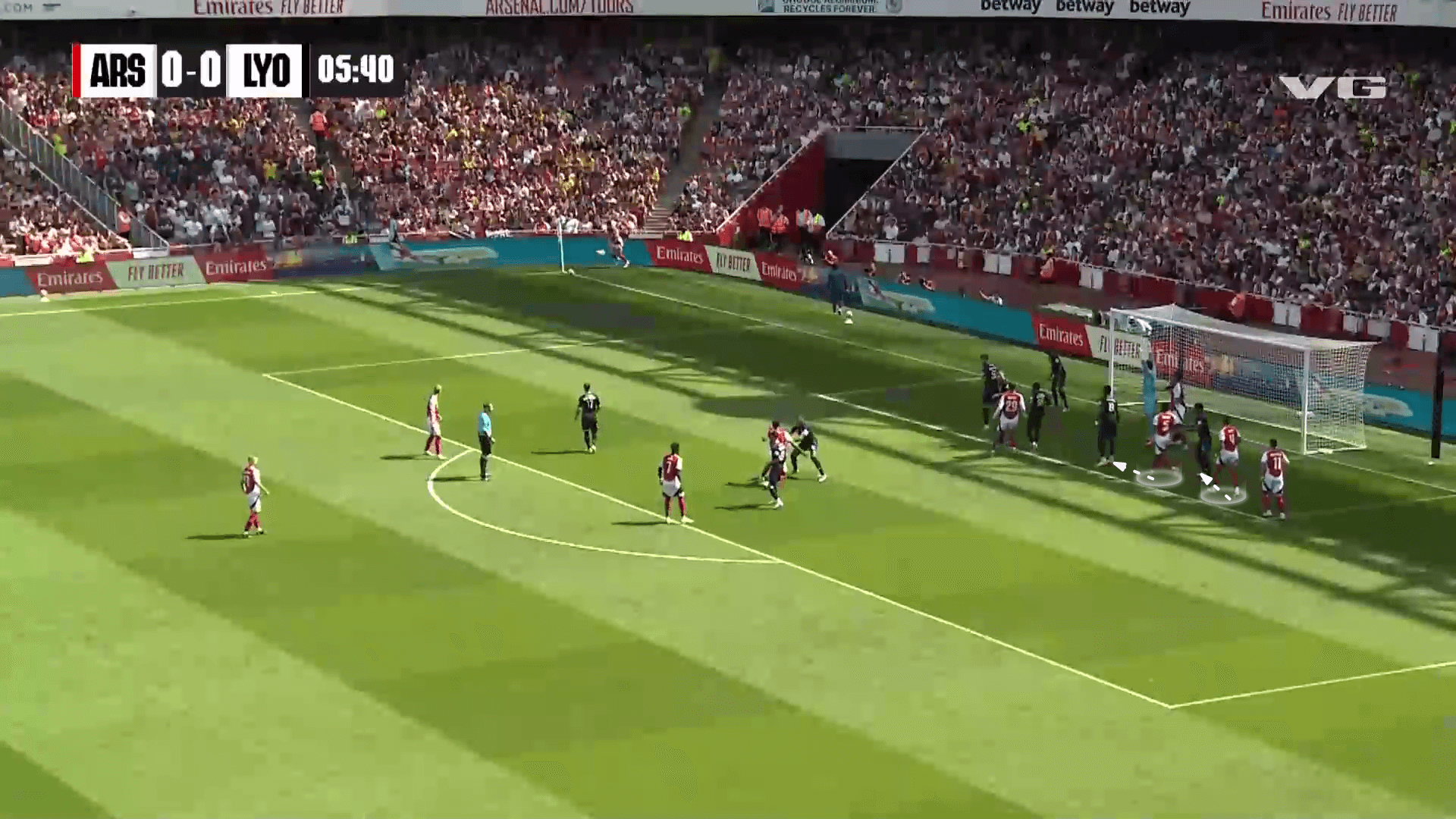
In the photo below, while the ball is in the air, the two zonal defenders realise the targeted area, but when they try to turn around, they find out that they can’t because of the blockers at their backs.
This strategy, coming from the blind side, makes the block effective and easy because it doesn’t demand huge power.
The blocker is asked just to stand, and it would be a great extra option if he exploited the defender’s tracking the ball to push him a small step.
It also avoids fouls because, in this case, referees would say that attackers stand in their positions while the defenders try to push them to turn around.
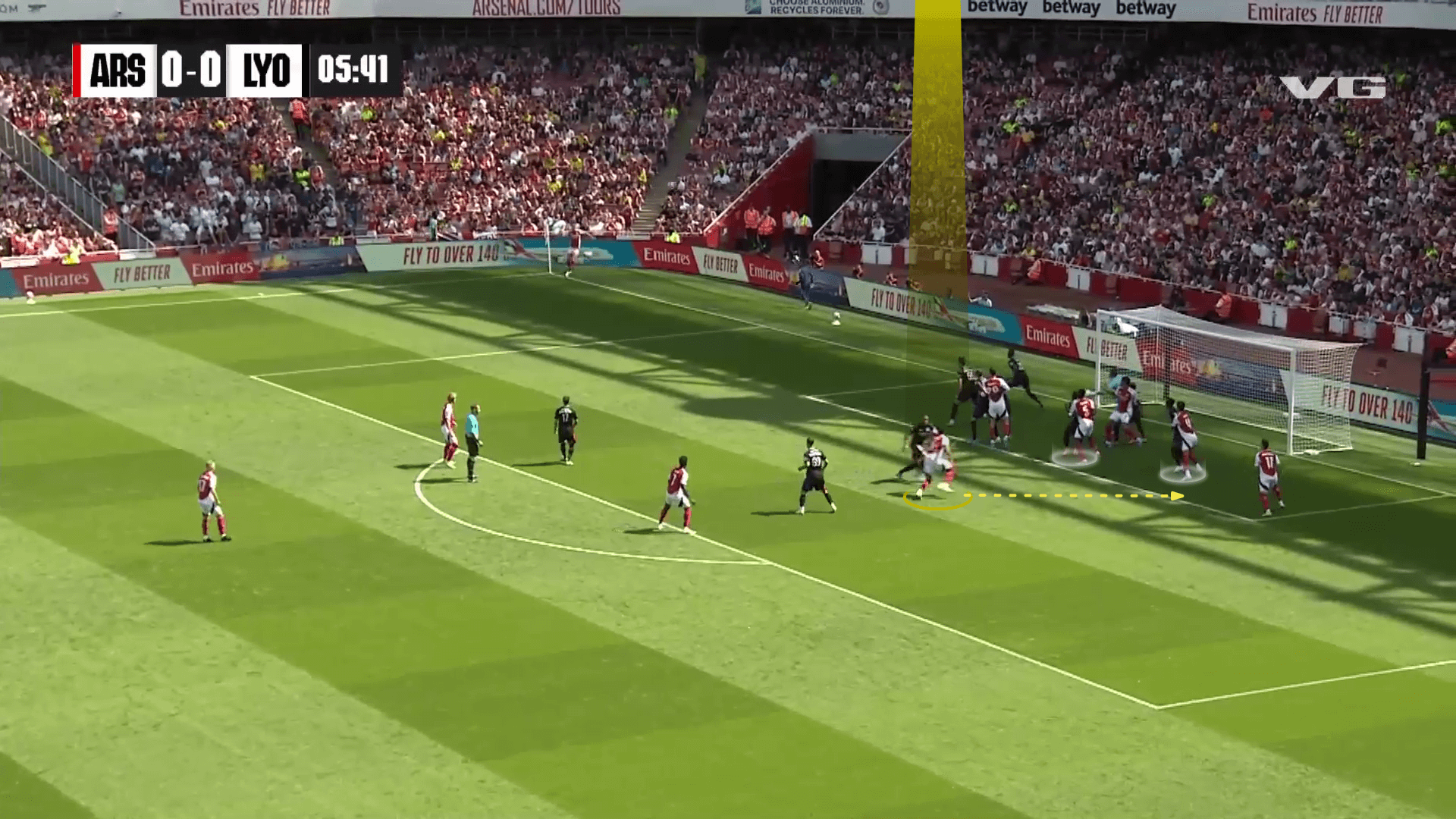
This strategy can also give another advantage besides coming from the blind side: great momentum because of running from a distant area.
This gives the blocker a dynamic advantage that enables him to overcome the zonal defender and the waiting man marker, too, as shown in the photo below.
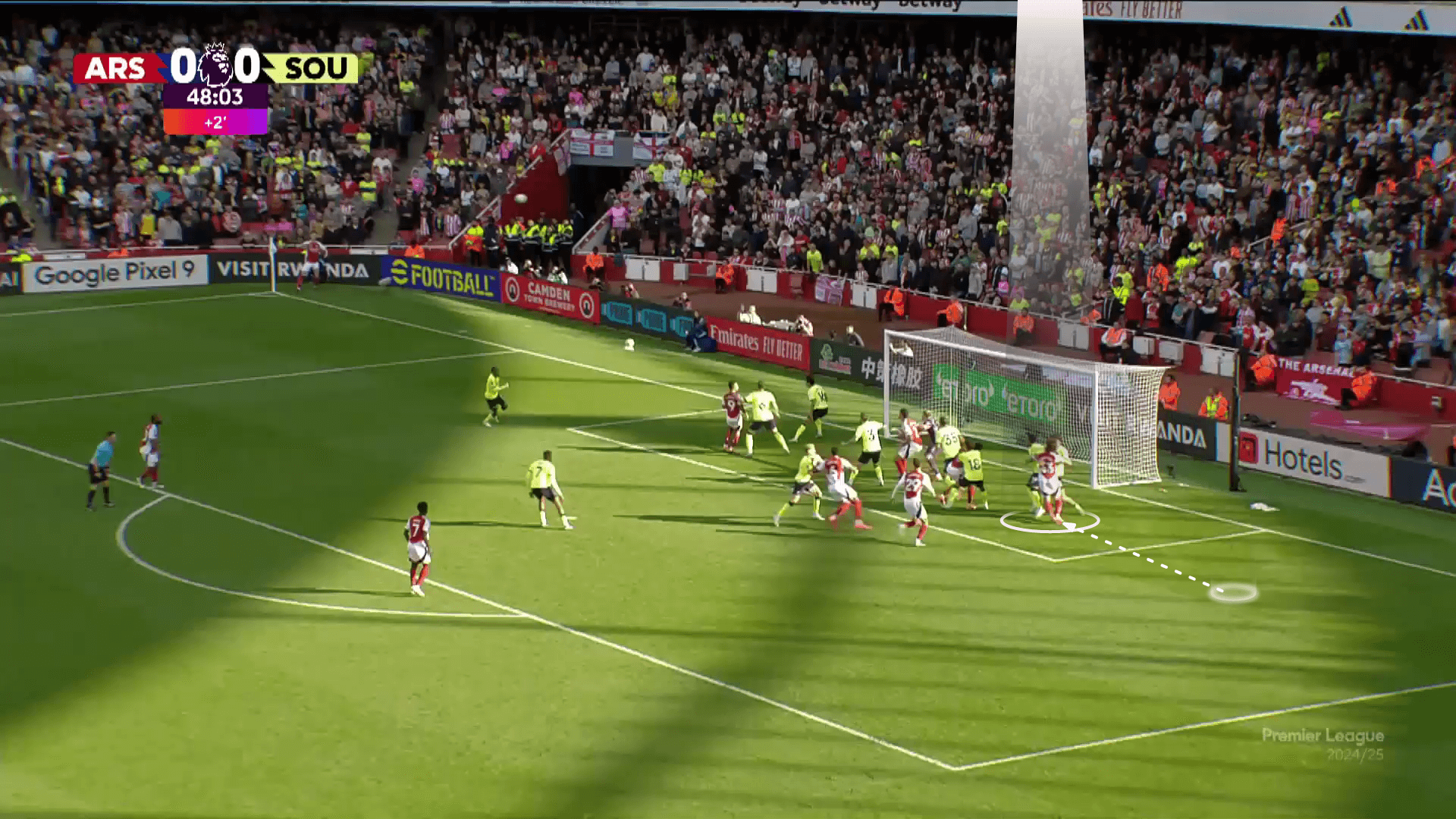
The following technique is using the shoulder for a side block, as Brentford do in the case below.
In the photo below, Brentford want to block the last two zonal defenders, so they ask Christian Nørgaard to block the last zonal defender and Kristoffer Ajer to block the second-to-last zonal defender.
Note: they use the same trick of coming from the blind side but in different ways from different starting positions.
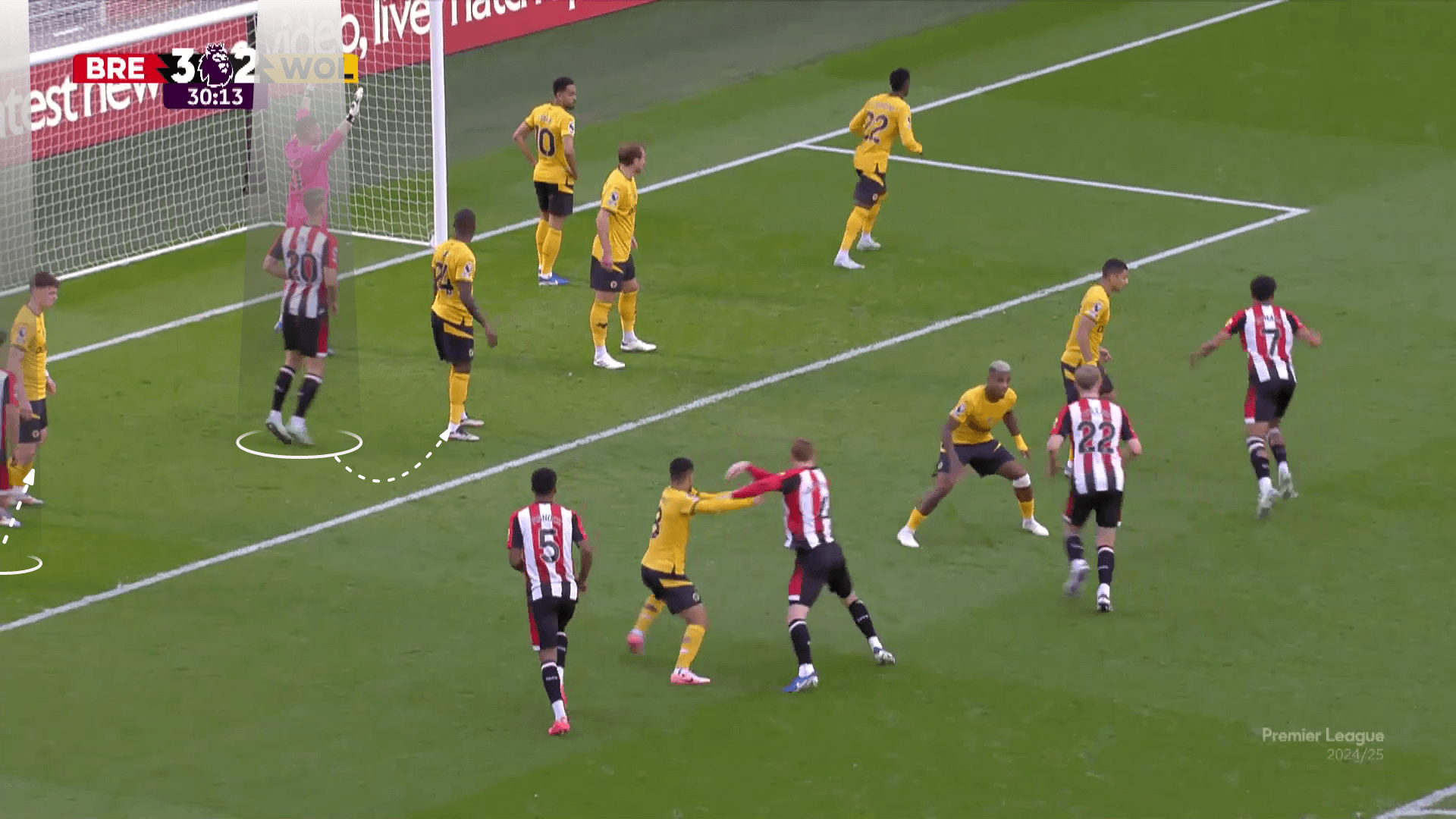
Christian Nørgaar blocks the last zonal defender in an ideal way because the targeted zone is frontal, while Kristoffer Ajer can do that, but he doesn’t have to.
He just performs a side block with his shoulder, preventing the zonal defender from moving in his right direction.
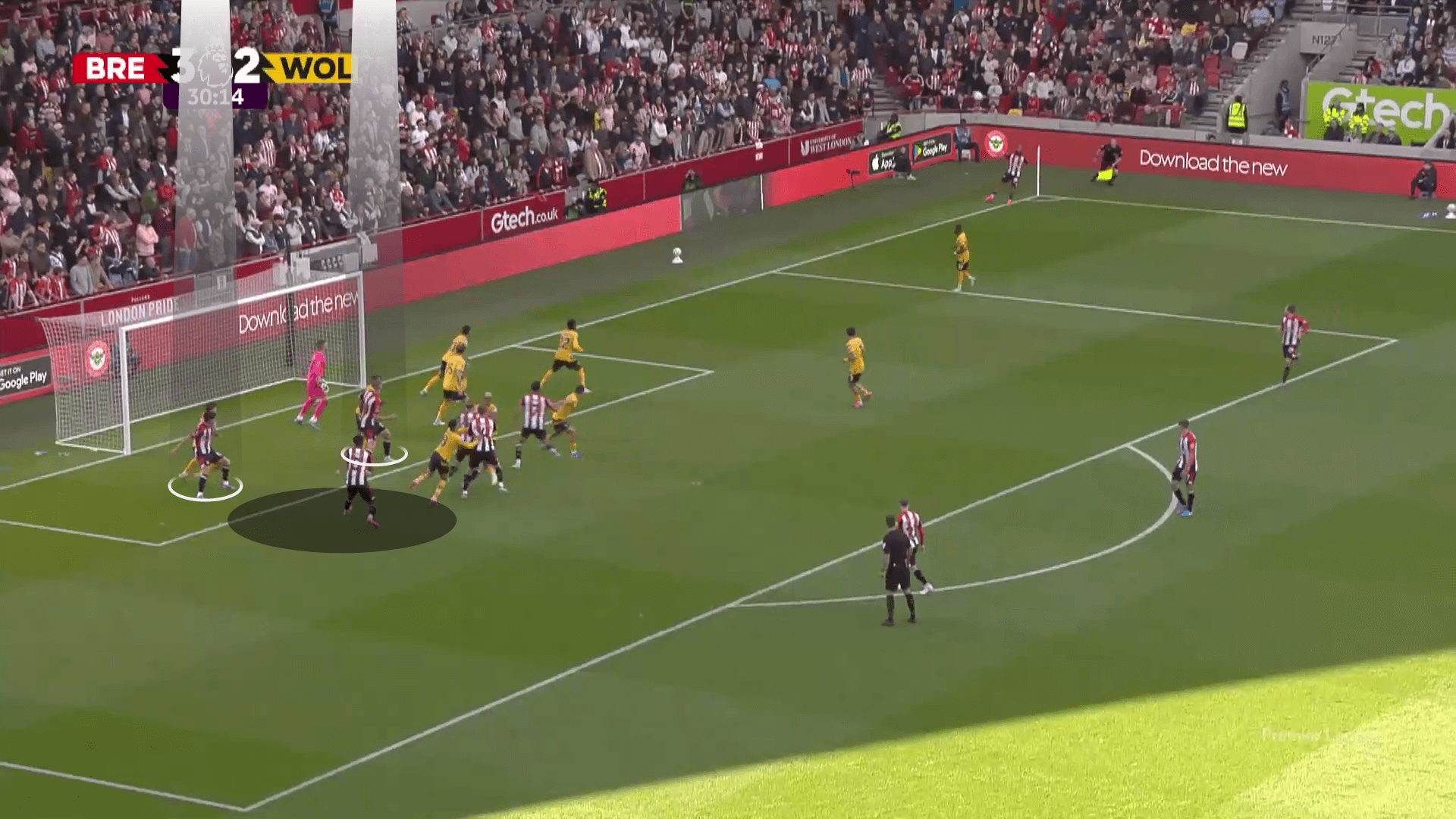
In the case below, we reach a higher level of blocking because we don’t just want to prevent zonal defenders from moving, but we want to push zonal defenders to create a gap between them.
In the photo below, Brentford use the same two blockers (white) to create a gap for the targeted player (yellow), so they want to widen this area between the two zonal defenders.
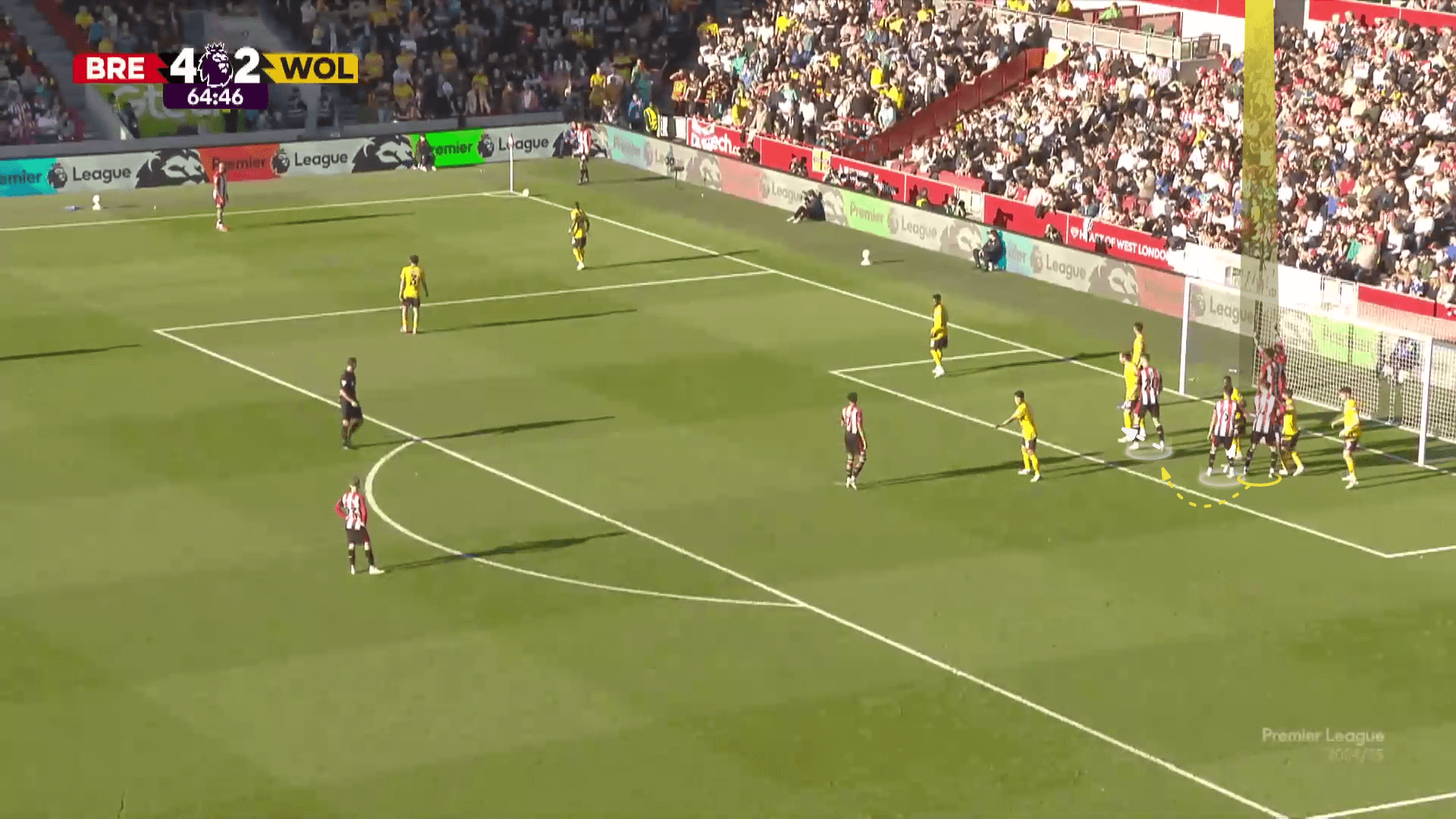
The first blocker (Kristoffer Ajer) uses the blind-side block method, using his power to stand in the defender’s back with a small hug and move two small steps forward with him.
The second one (Christian Nørgaard) follows the side-block method, using his shoulder to push the zonal defender away, as shown below.
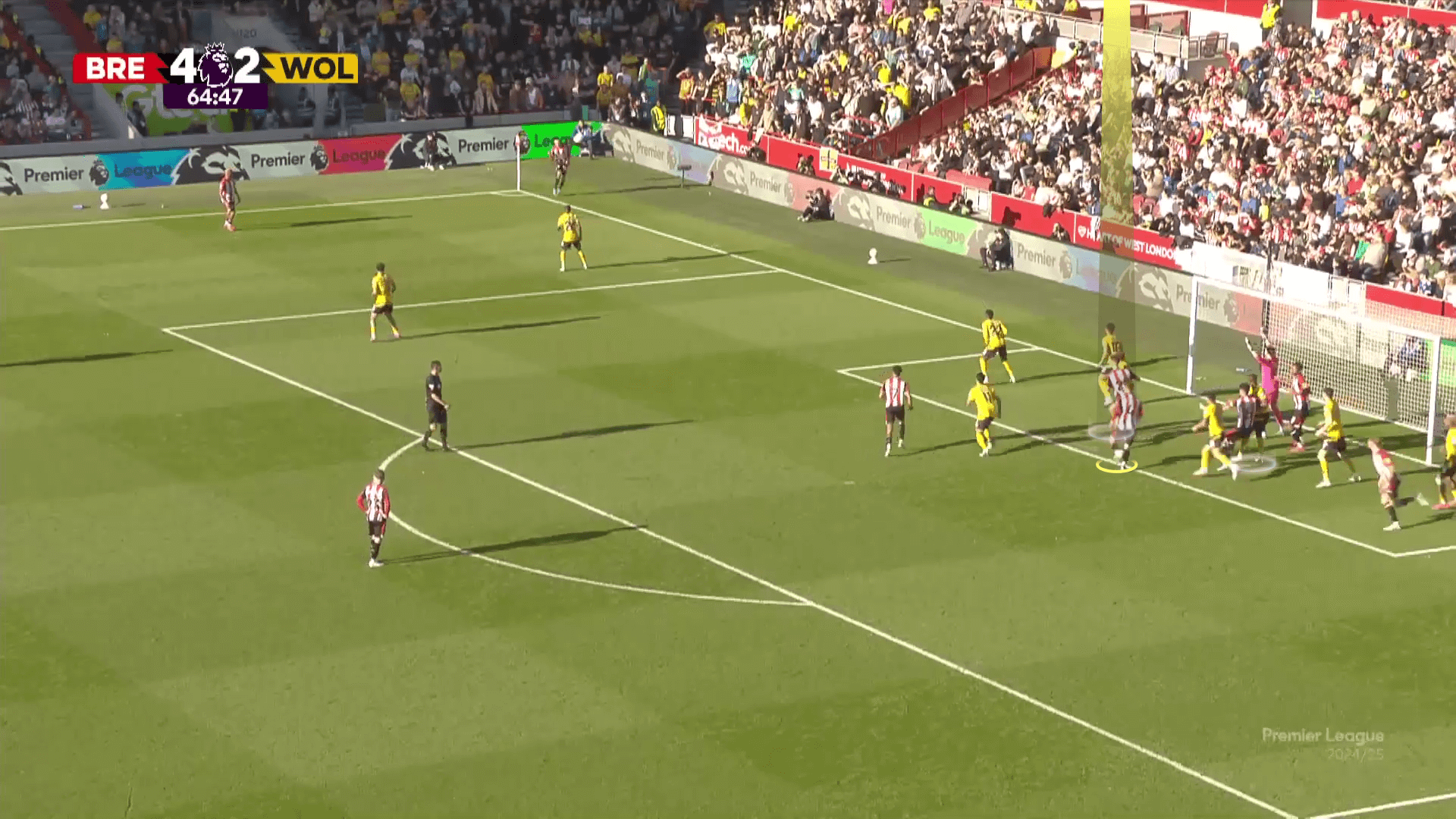
The gap is created successfully, as shown below.
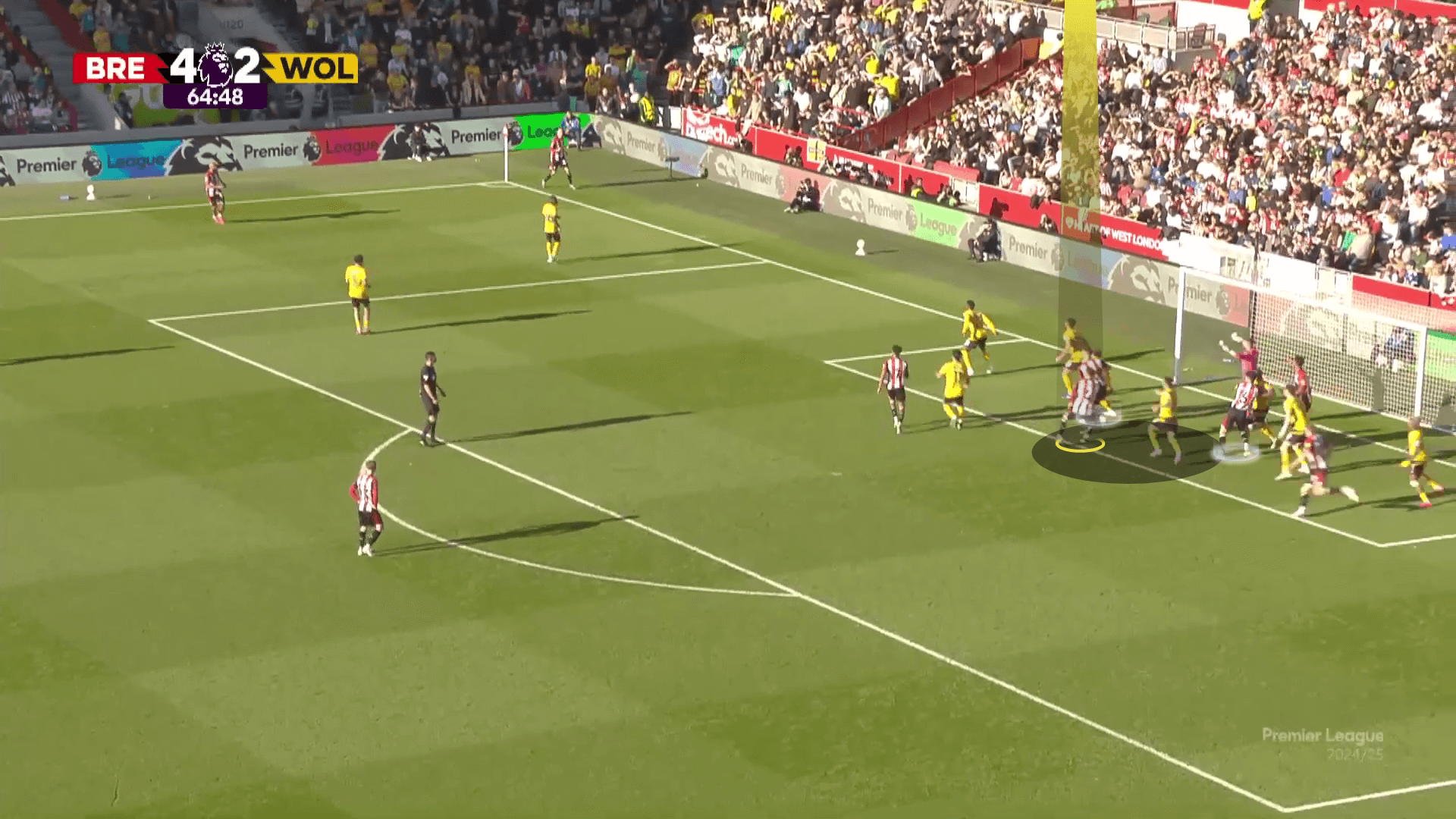
The Near Post
The near post is not much different from the far post; the ideal block uses the same technique, but the need for it increases, especially if the defender to be blocked is facing the targeted area, as shown in the image below.
Note: we refer to it as the ‘ideal’ technique because it is used when you want to ensure that the defender can’t move, whether from the front or the back, facing the targeted area or not.
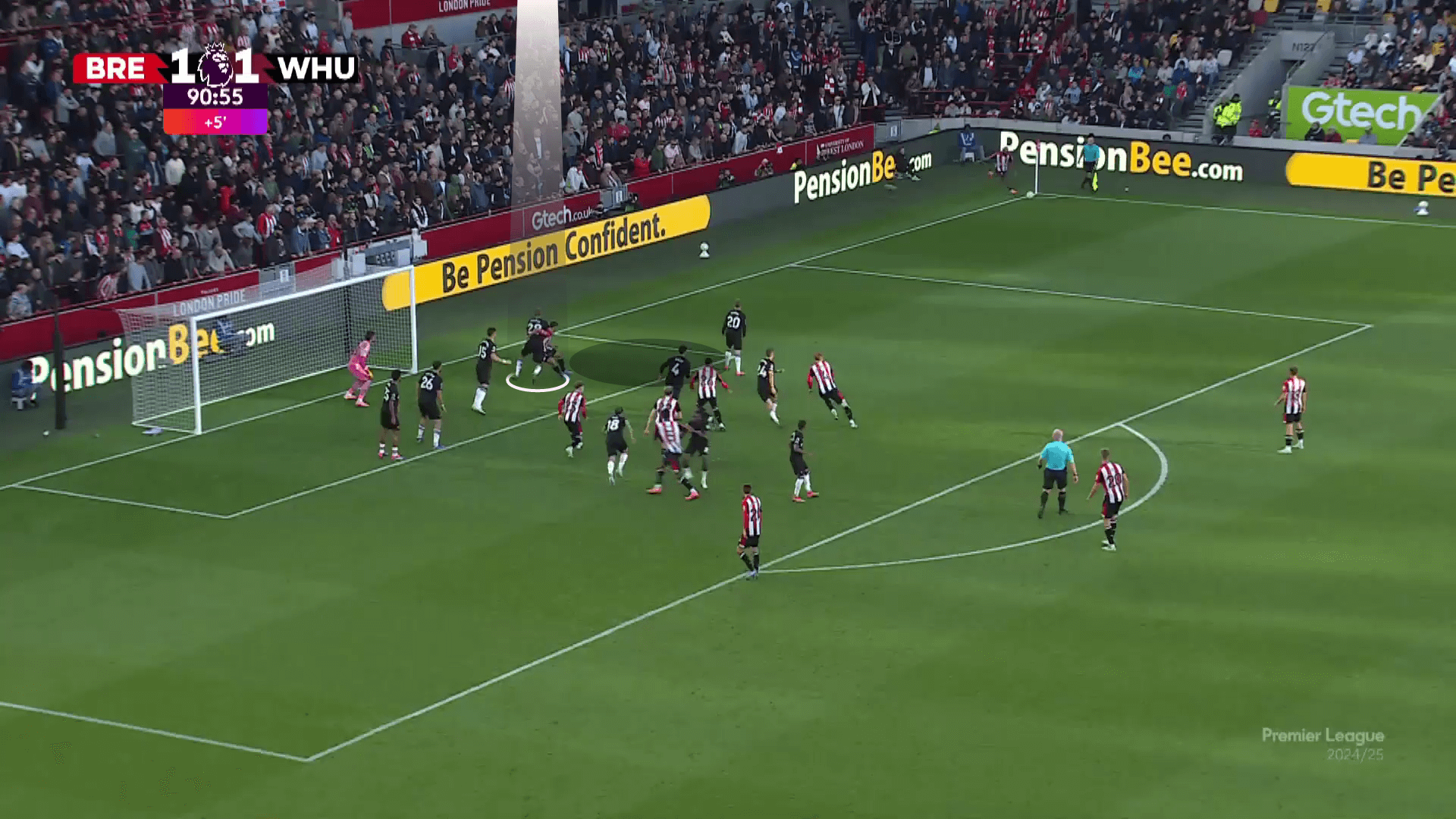
In the first two photos below, the same assistant factor of coming from the zonal defender’s blind side is clear, so Joshua Kimmich’s block is so effective despite not being the strongest one.
In the last two photos, the same assistant factor of using a dynamic mismatch is clear so that you can see Gabriel Martinelli’s block is so effective despite not being the strongest one.
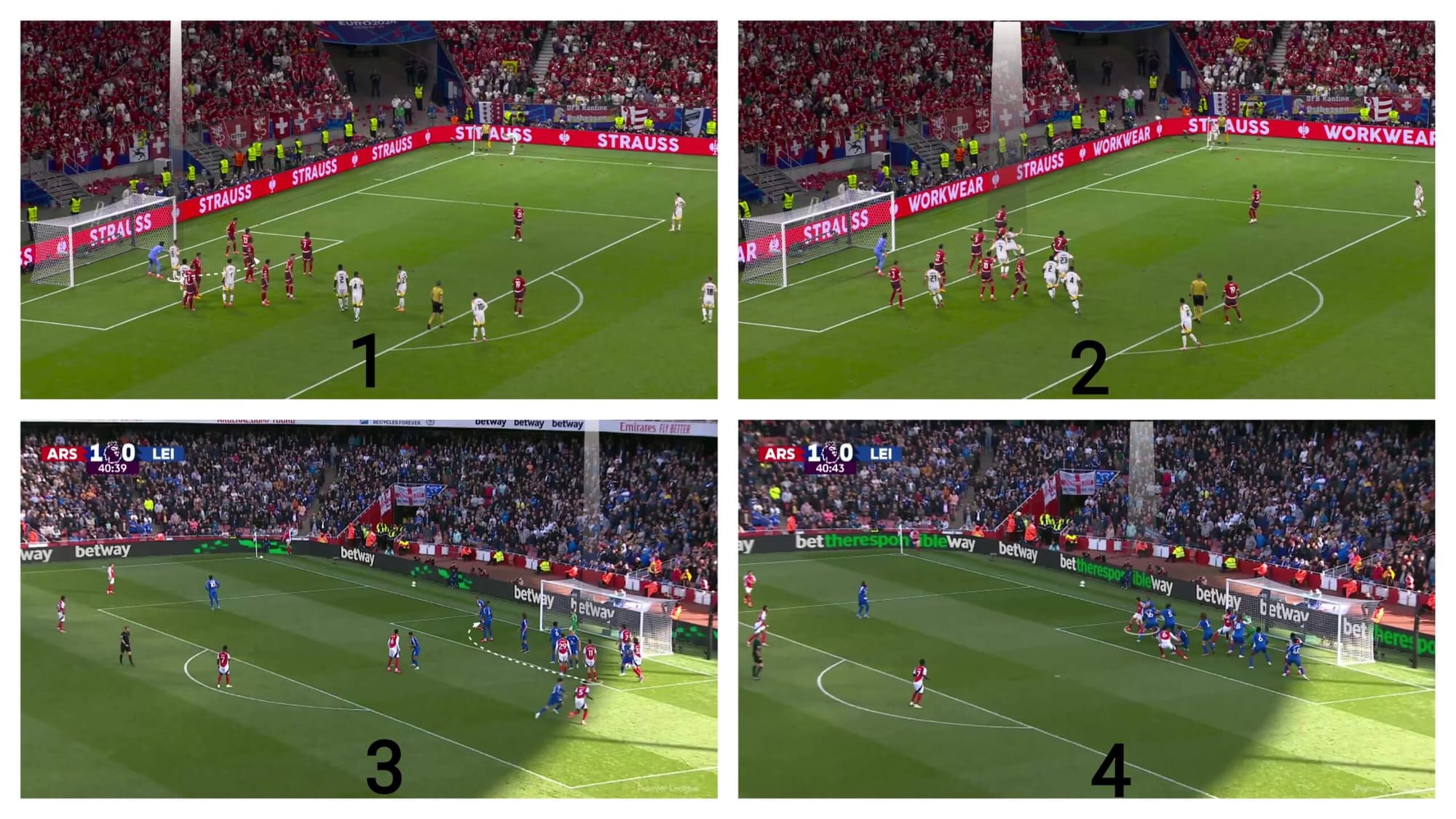
Here, we want to ensure that you can use any technique or strategy you want according to your players’ physical abilities and referees’ methodology in your country.
For example, you may not have to perform so many tricks if you have an excellent player at blocking (physically and technically).
In the photo below, Kristoffer Ajer blocks both his marker and the zonal defender with the ideal technique, coming from the zonal defender’s blind side.
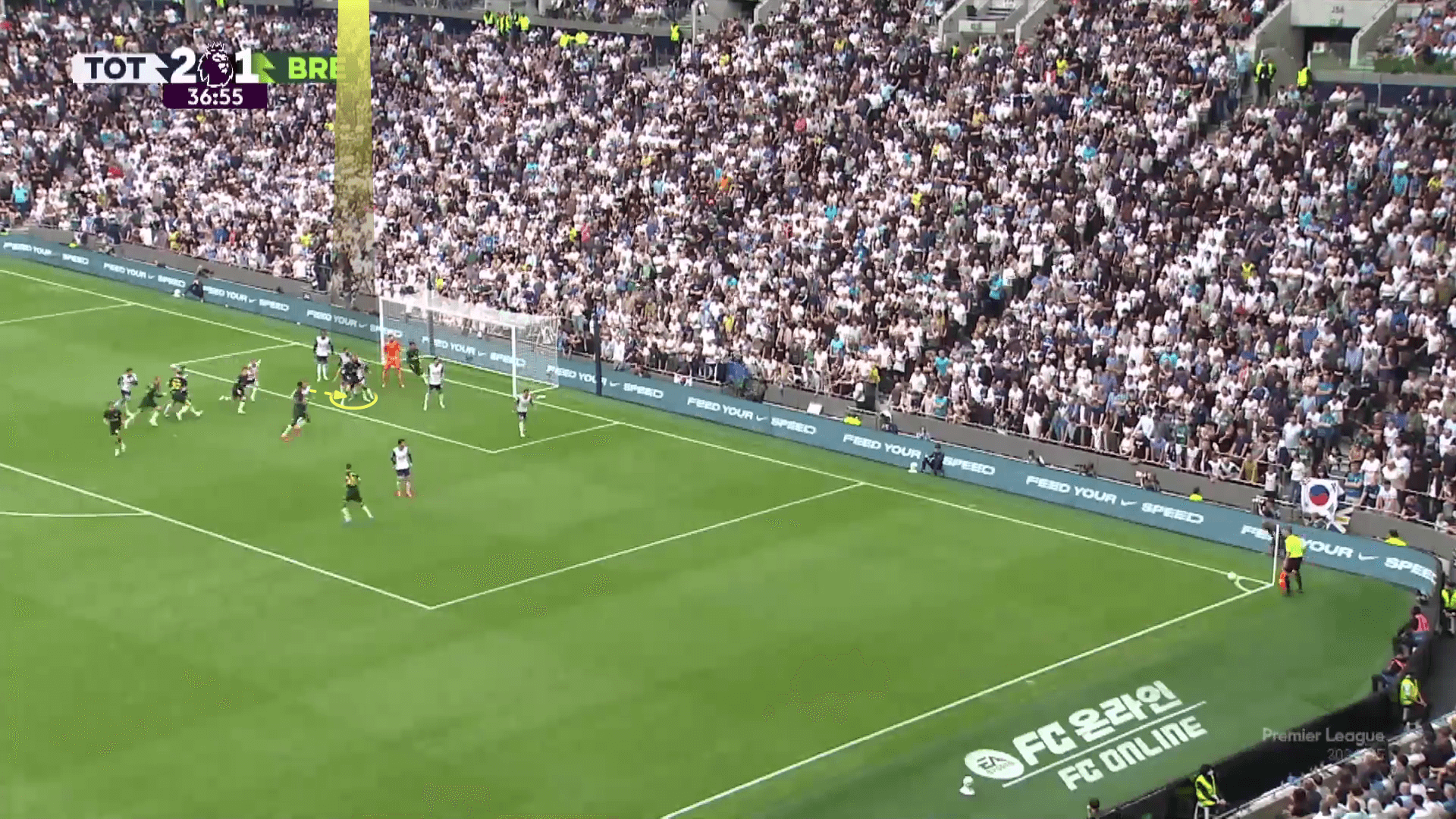
Finally, as we did with the far post, we also have an example of using many techniques in the same case for different purposes.
In the photo below, four Brentford players are assigned to do four blocks.
The first three are behind the zonal line, while the fourth is beyond it in the right direction.
As we will show, these are different blind side positions for the defenders to be blocked.
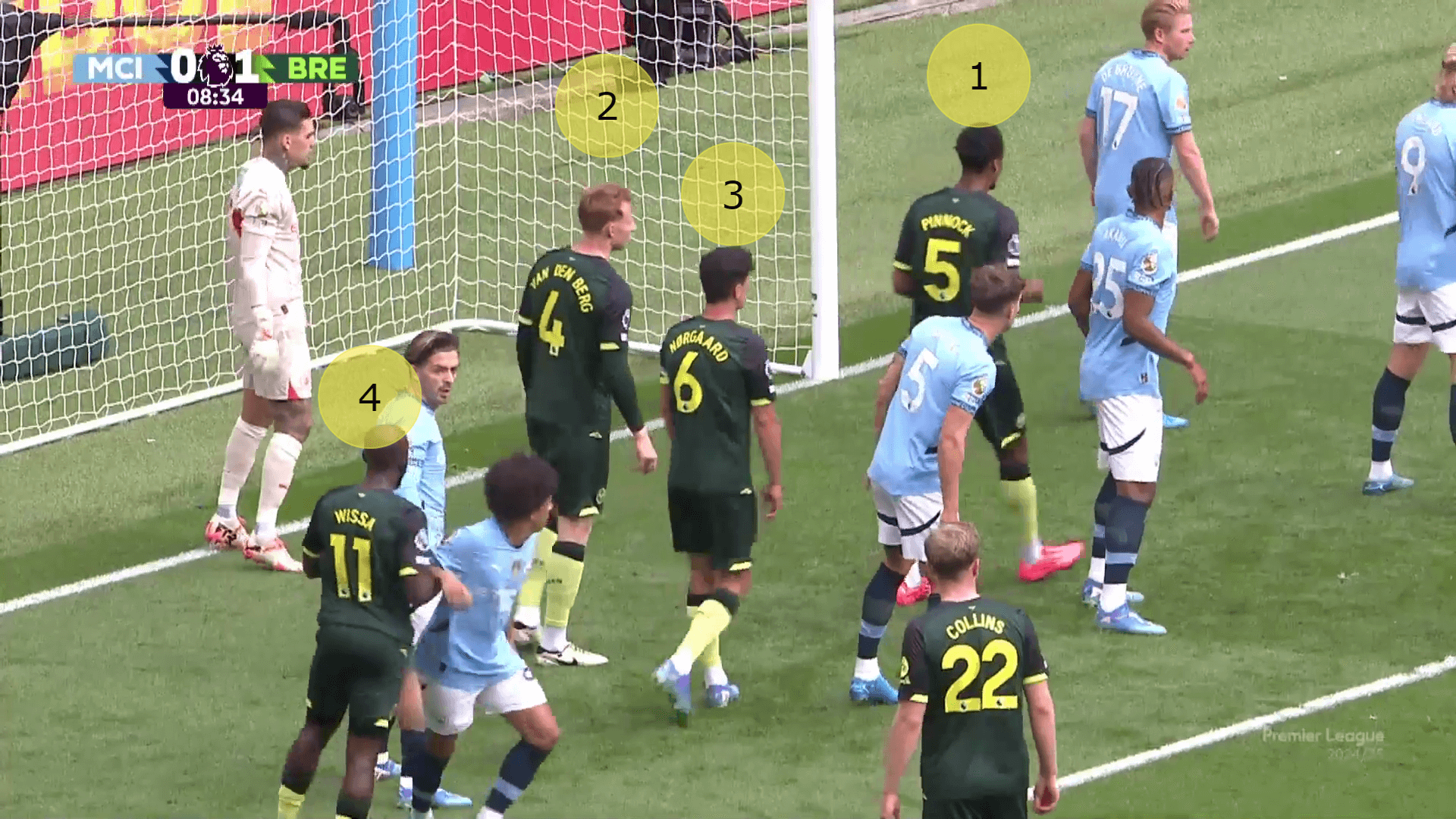
As shown below, the first two blocked defenders are critical because the ball passes directly in front of them on its way to the targeted area, so Erling Haaland and Kyle Walker are under siege by the first two blockers.
The third one faces the targeted area directly, so he needs to be blocked ideally, while the fourth one is a little far, so he needs just a blocker standing in front of him for a few moments with a small hug.
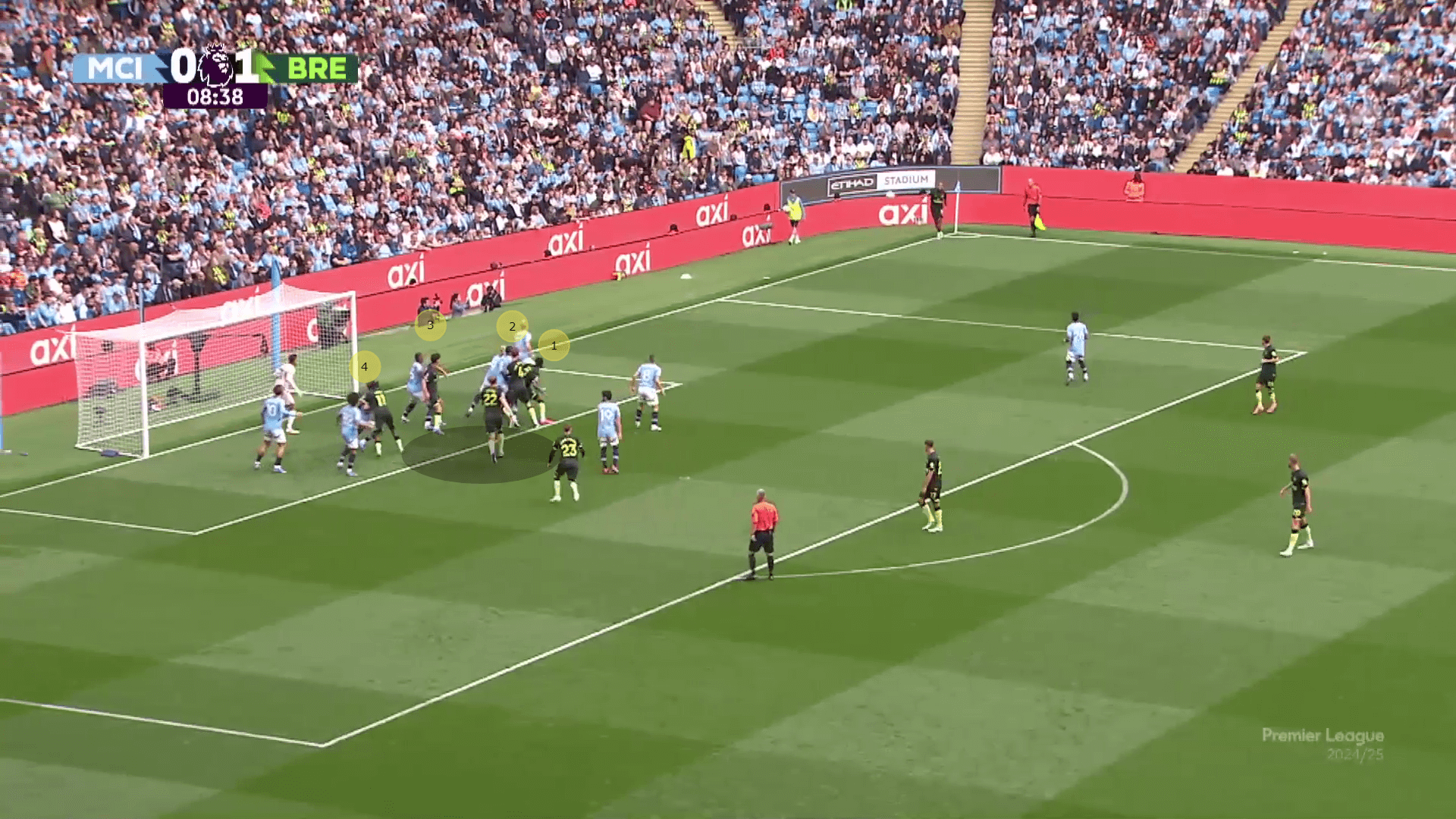
The image below shows a different angle of these four blocks, creating a stunning visual display.
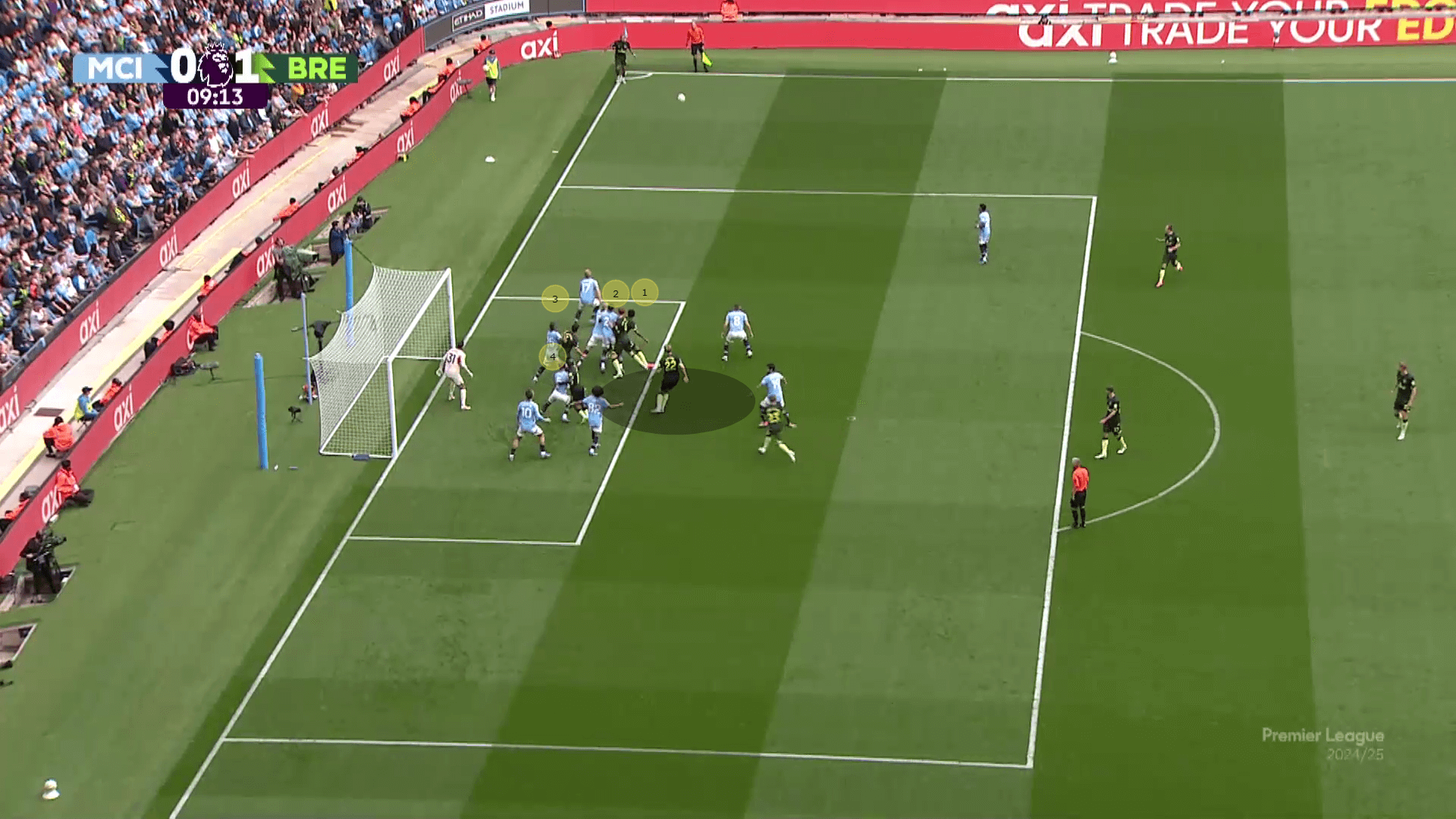
Blocking The Goalkeeper
The Previous Way
The most famous and effective way of blocking the goalkeeper was Ben White’s way in which he performed two important actions:
1- He provocatively distracts the goalkeeper from what is happening around him, causing him to enter a constant state of tension and tug-of-war, worried about what he will do, as shown below.
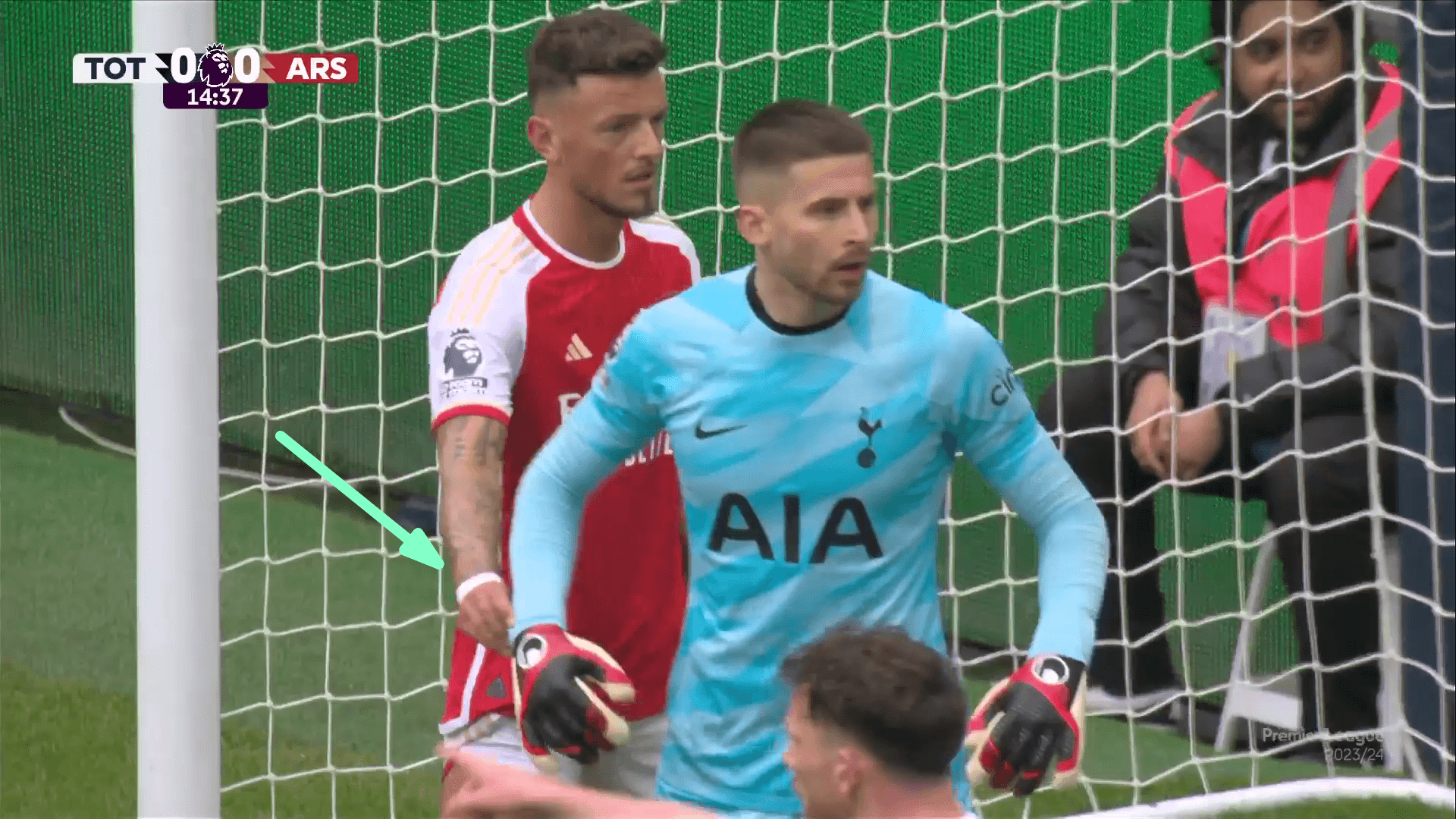
2- He uses his strength to push away his man marker, if present, at the right moment and then comes from the blind side of the goalkeeper to execute the ideal block for a long period, ensuring the goalkeeper doesn’t rise to claim the ball or at least delaying that, as shown below
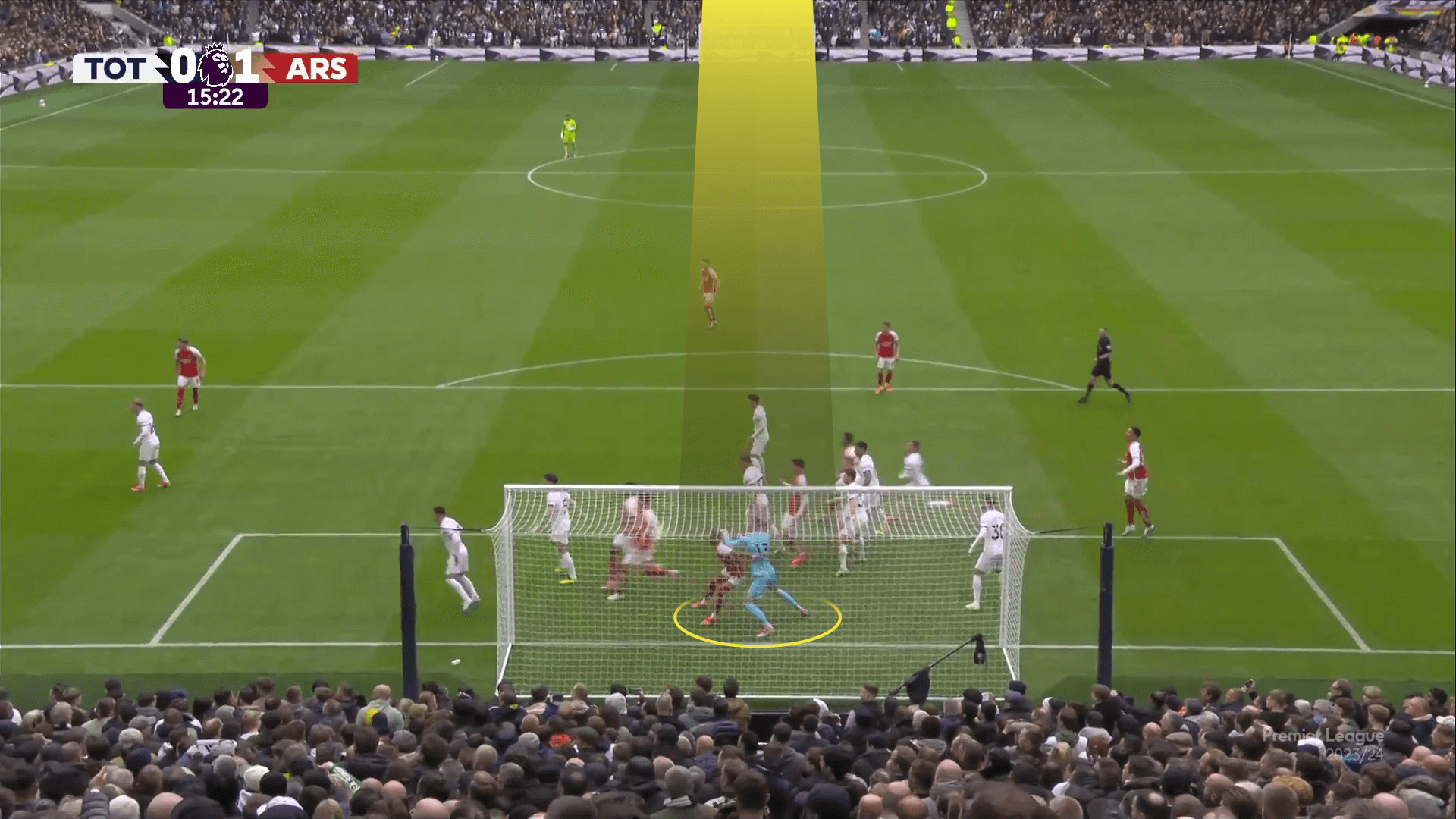
However, with this issue’s increasing fame, referees have become more sensitive to such behaviour and consider it a foul.
There are also rumours about rules that would categorise these types of actions as fouls in certain leagues.
Regardless of the veracity of these claims, referees have grown more vigilant about this conduct.
As a result, teams tried to find many alternatives, as we will discuss in both cases, directing the far or the near post.
The Far Post
We will start with the easiest tasks and gradually move to the more difficult ones, which depend on the goalkeeper’s ability to claim the ball and the targeted area.
In the two photos below, Brentford asks the blocker to stand in the goalkeeper’s blind side, makes a small physical touch with him, and then lets him go away to follow the second ball.
This delays the goalkeeper’s reaction for a moment, so it is useful if the targeted zone isn’t so close.
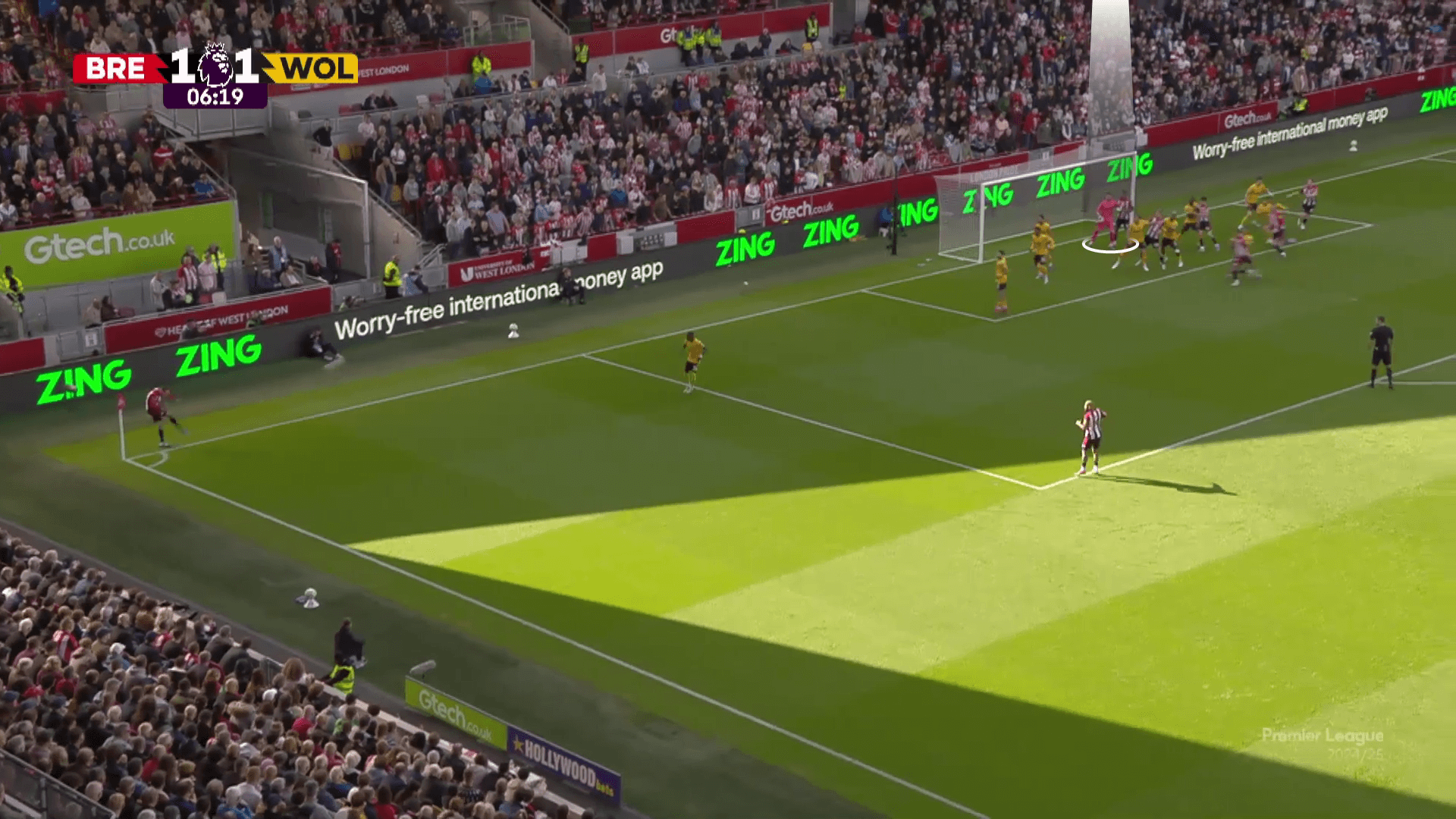
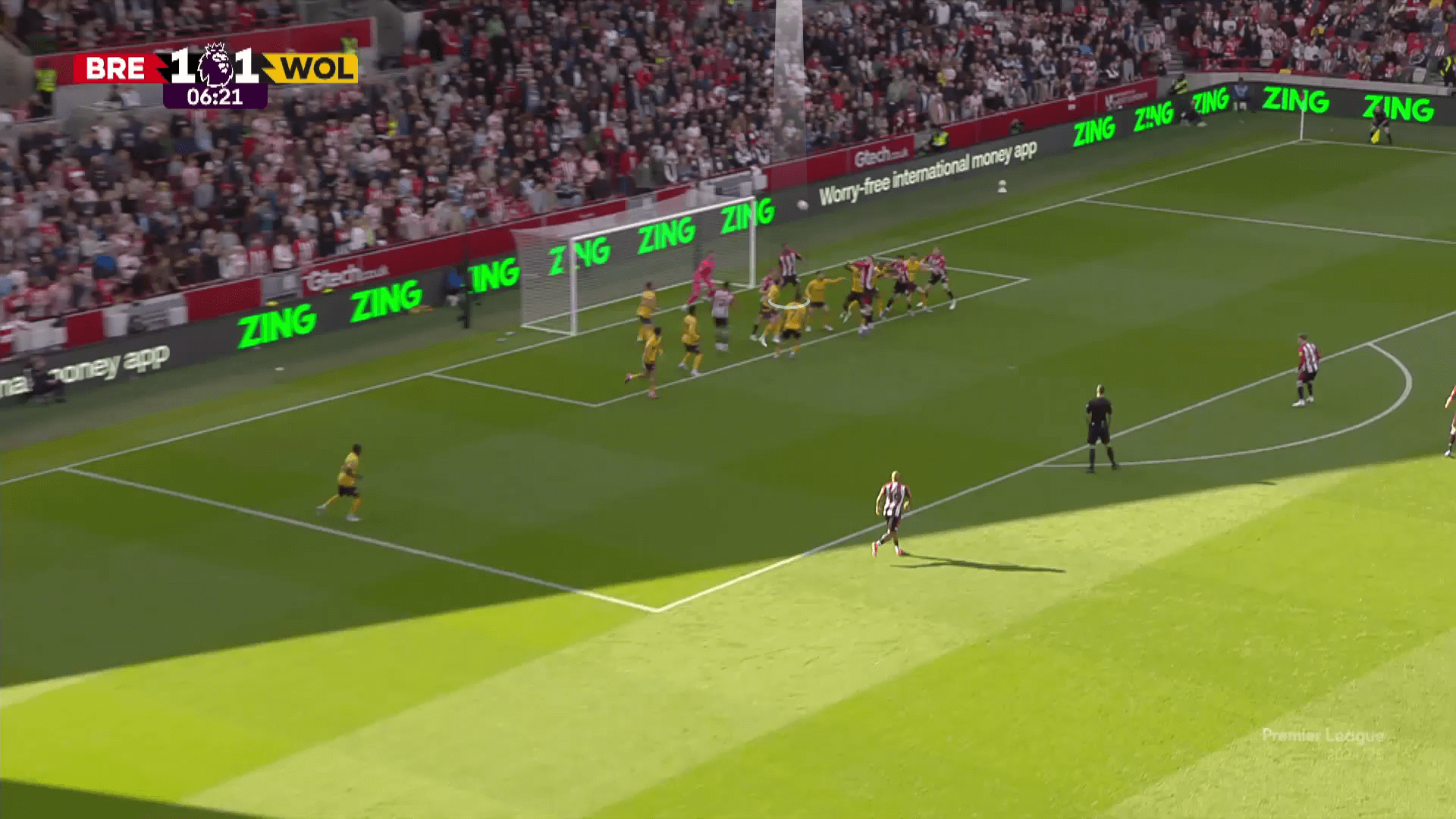
In the two photos below, Tottenham’s blocker stands behind the goalkeeper and then turns around him to take his reaction more and more, besides coming from the blind side.
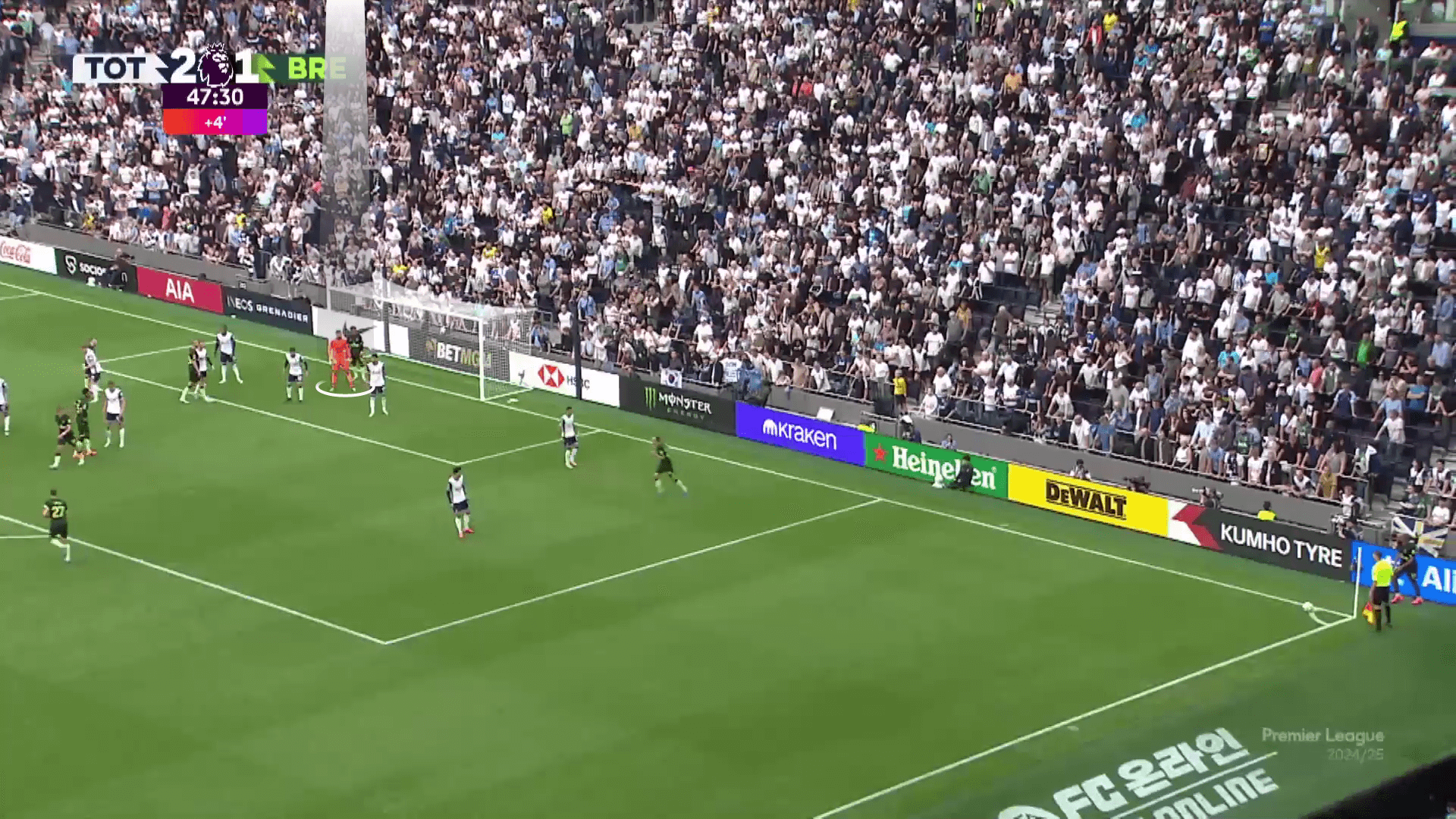
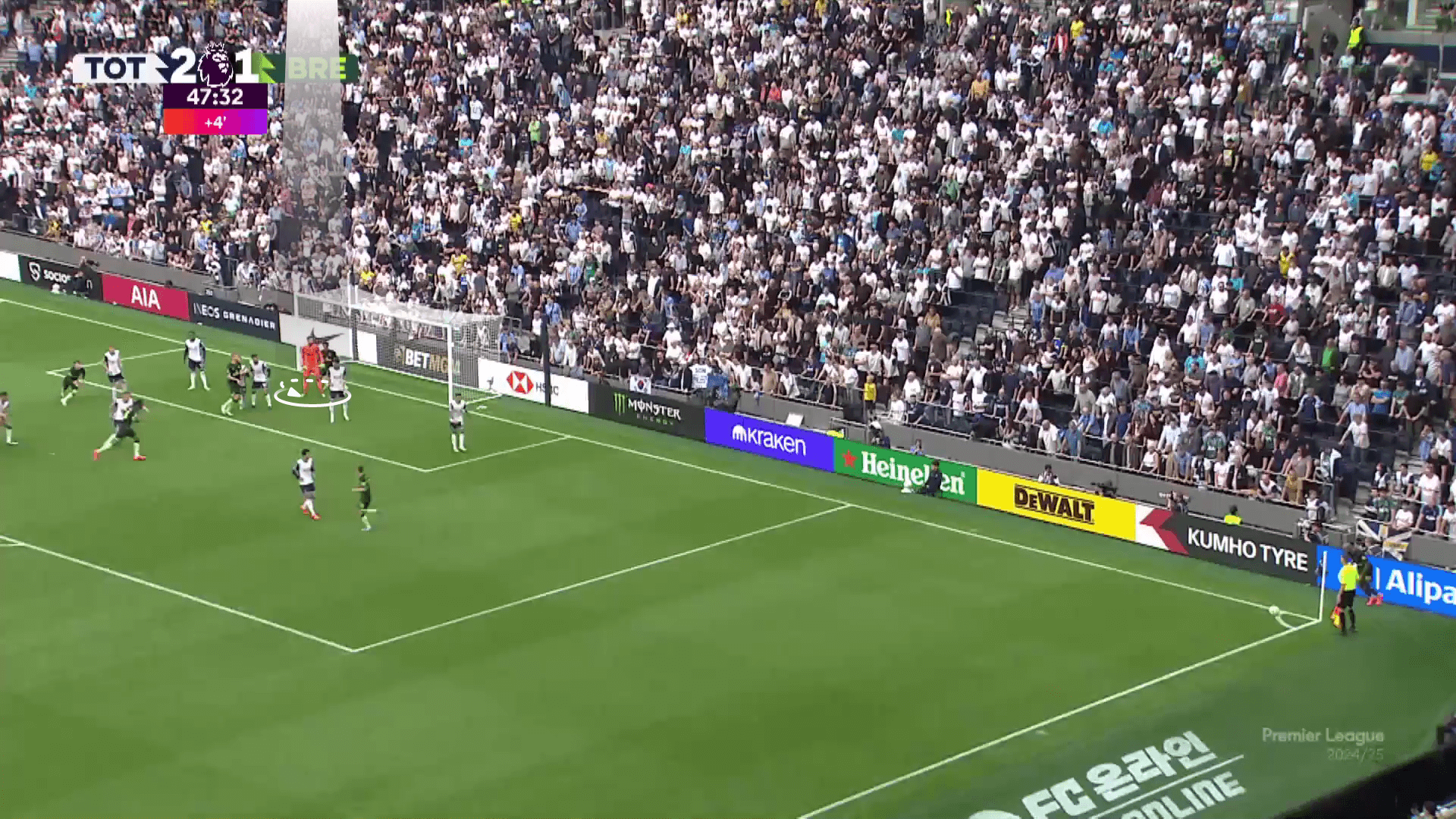
As shown below, he also leaves him quickly not to commit a foul, so the block’s period is short.
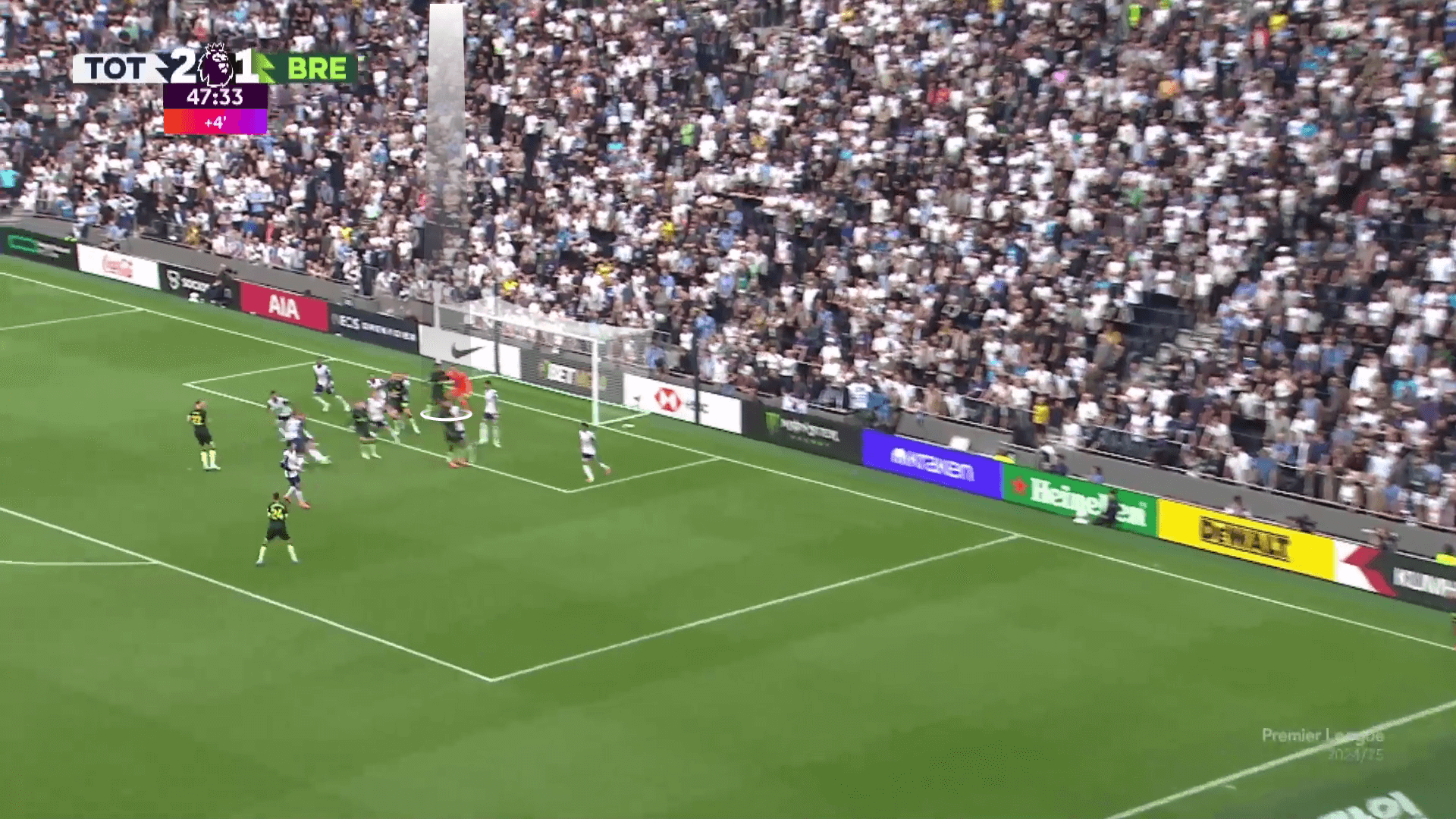
In the next stage, Brentford sometimes asks the blocker to push the goalkeeper toward the near post freely before the ball is kicked when he leaves the goalkeeper and goes away to avoid fouls after taking his attention and delaying his reaction, as shown below.
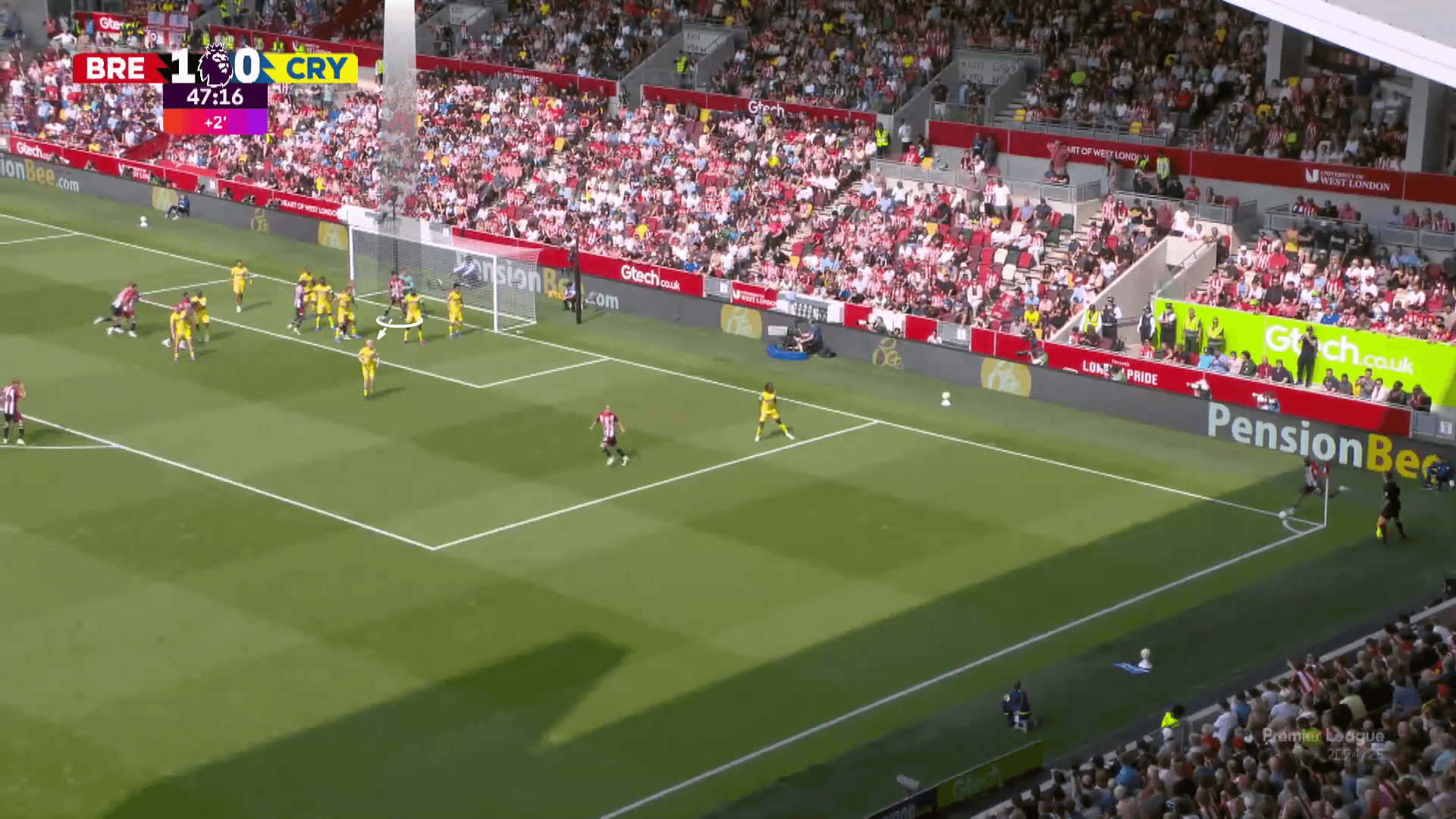
In the next stage, Arsenal uses the “traffic” in front of the goalkeeper, making it difficult for him to claim the ball with all the traffic around him.
In the photo below, William Saliba and Gabriel Martinelli go around the goalkeeper.
Saliba goes in front of him, dragging him while Martinelli stands at his back so that he cannot turn around toward the targeted area.
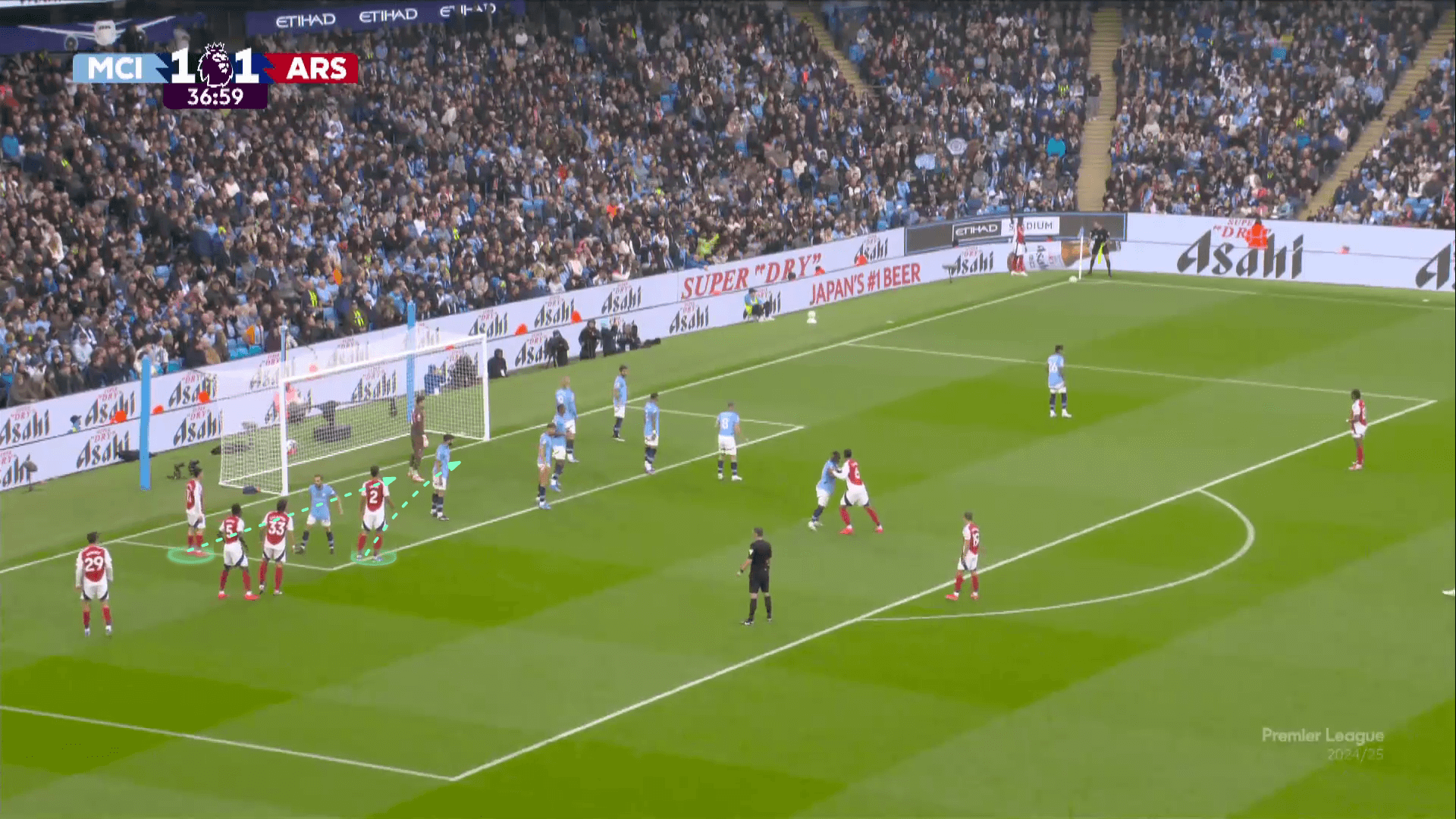
Note: they don’t aim for a huge physical contact between the zonal defenders and the goalkeeper; they just want to besiege him, making it appear that the goalkeeper is the one who goes toward them when he wants to go to the ball.
Martinelli just gives his back, and you are the one who goes toward him, as shown below.
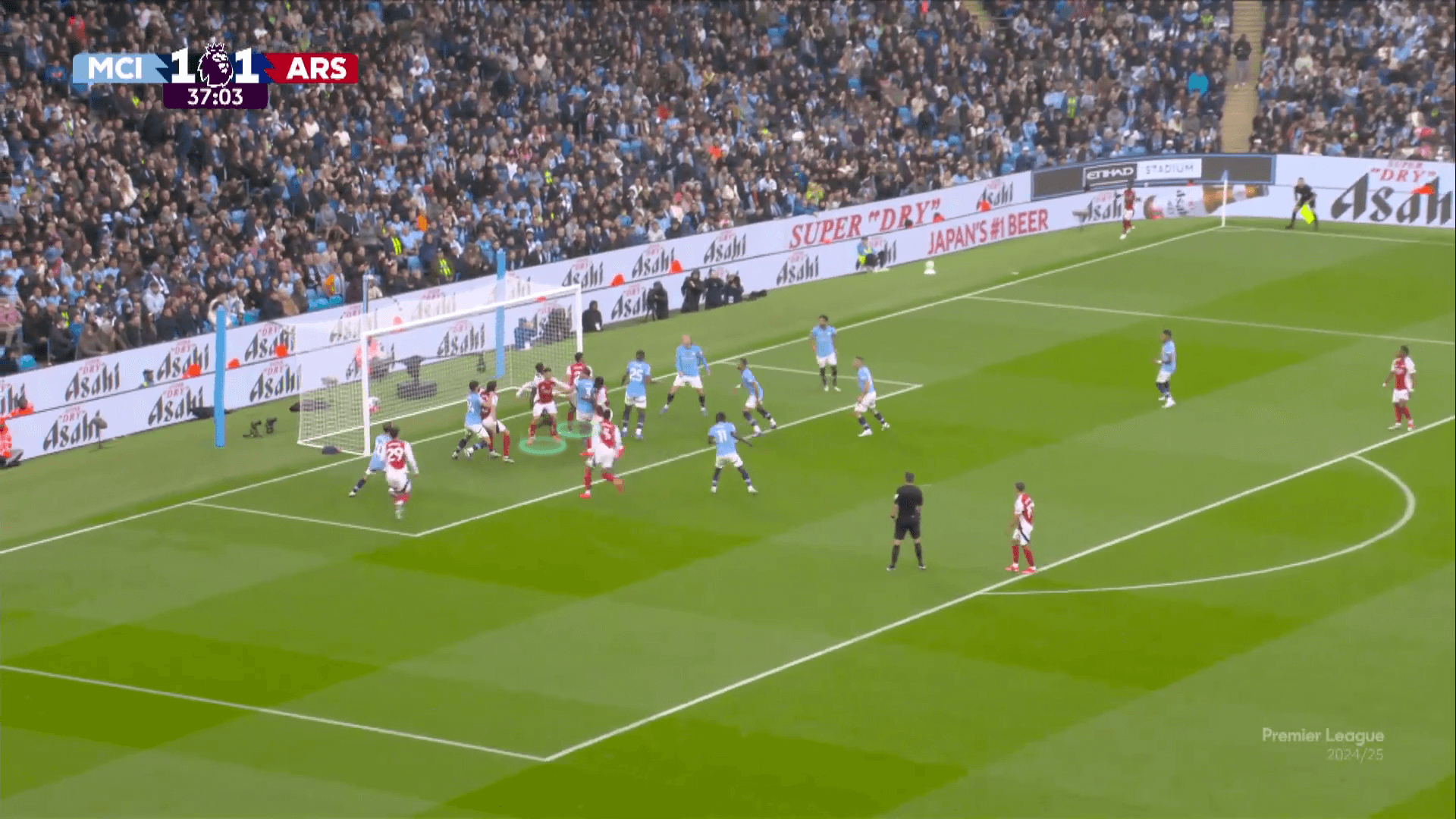
Arsenal can achieve this traffic around the goalkeeper without the need for a second blocker to the goalkeeper.
In the case below, we want to highlight how hard the goalkeeper can claim the ball against Arsenal’s traffic.
Saliba (green) is the normal blocker, while the three blue players block the last zonal defenders, preventing them from stepping back to the targeted area beyond the far post for Havertz and Gabriel (Orange).
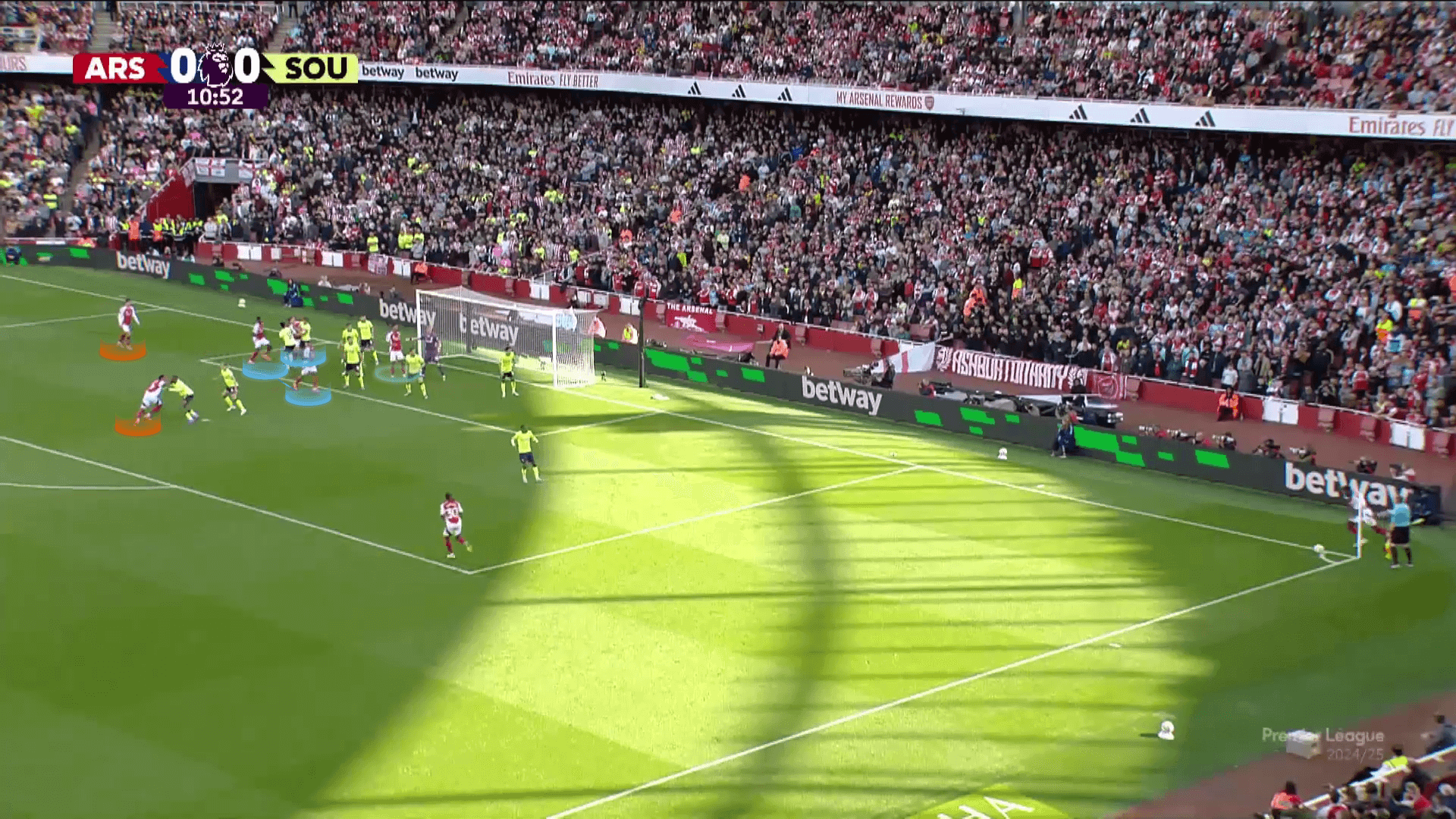
As shown below, the goalkeeper can push Saliba away, but there is still traffic between him and the targeted area.
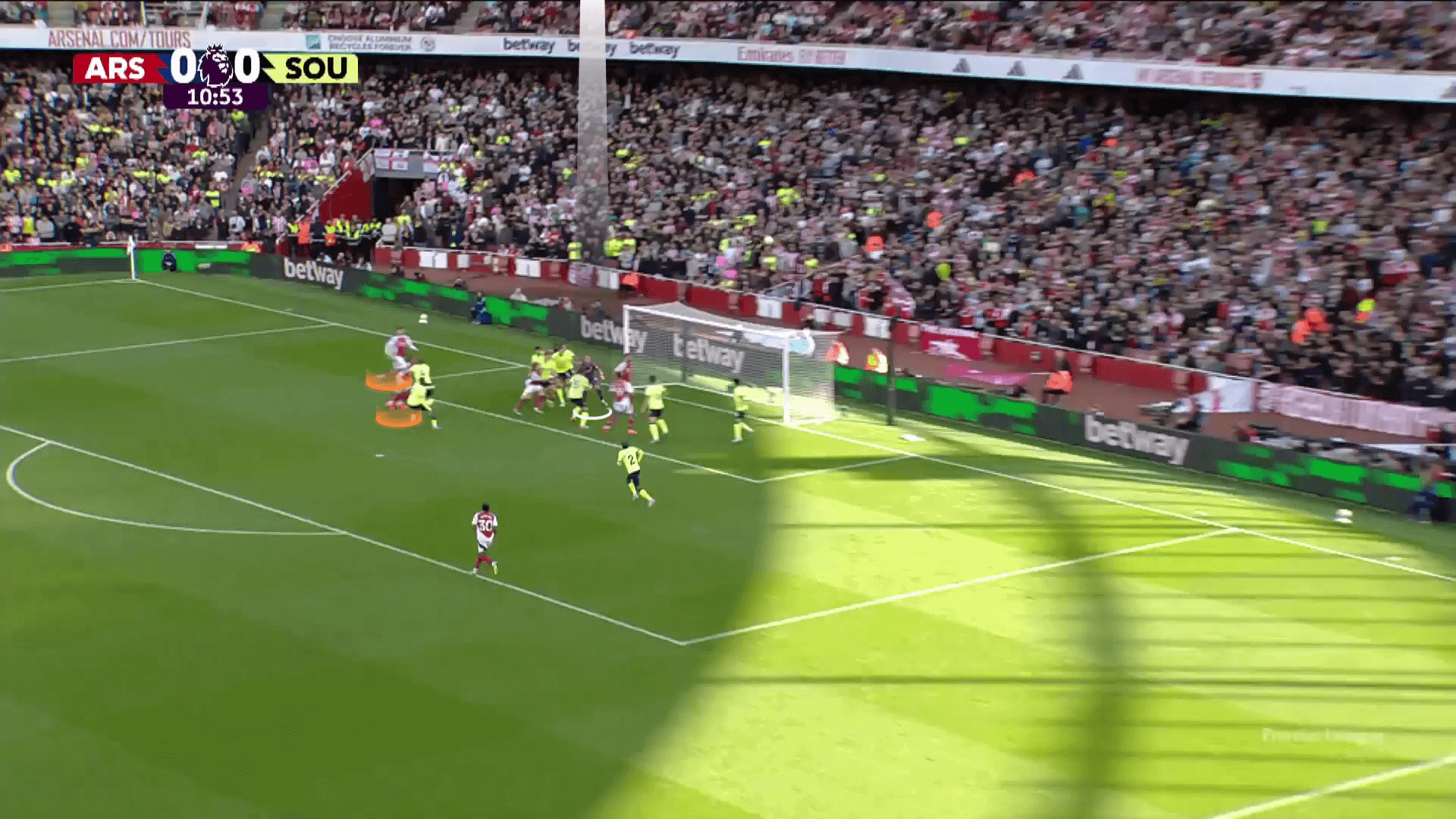
The Near Post
The situation is not much different when targeting the near post, as seen in the first two images, where Tottenham employ the same technique of blocking the goalkeeper from the blind side.
Naturally, in this case, the blocker takes the opposite direction.
In the third and fourth images, Ben White and William Saliba go to block the goalkeeper, dragging two defenders with them.
This led to more traffic in the area around the goalkeeper, making it difficult for him to reach the ball.
It is important to emphasise that players should not touch the goalkeeper — instead, standing just a few centimetres away can compel the goalkeeper to come towards them.
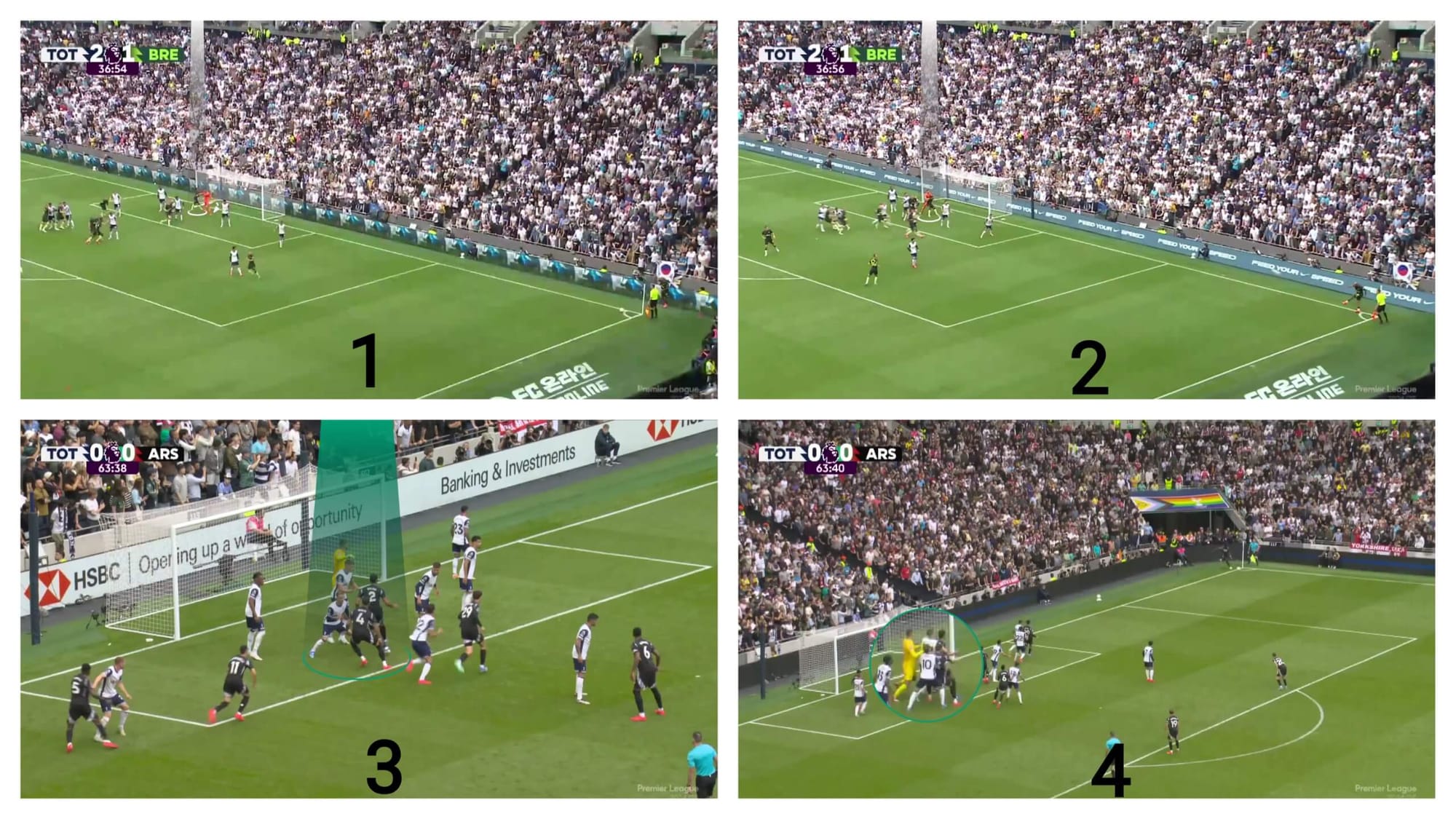
In the end, we don’t say these techniques will never be considered fouls, but we say they increase your probability of not committing a foul.
Conclusion
In this analysis, we have illustrated the various blocking techniques and strategies, which are affected by the targeted area, the plan, and the player’s physical ability and preference.
These techniques aim to be effective while avoiding fouls.
In this set-piece analysis, we have also shown two different kinds of blocking: blocking a zonal defender and blocking the goalkeeper.
In the following magazine article, we will discuss the same topic regarding screens and how to perform them effectively without committing fouls.






Comments